The Pentagon
KEY CONTACTS
JBAB Housing
Housing Services Center
21 MacDill Blvd.
Washington, D.C. 20032
PH: (202) 404-1840
Bolling Family Housing
Privatized Housing
8660 Angell St.
Washington, D.C. 20032
PH: (202) 562-2631
Liberty Park at Andrews
Housing Office
2097 San Antonio Blvd.
Joint Base Andrews, MD 20762
PH: (866) 944-7504
Military & Family Support –
Pentagon
1565 AF Pentagon
Room 5C1049
Washington, DC 20330
PH: 571-395-0408
JBMHH School Liaison Office
102 Custer Rd.
Bldg. 203
Fort Myer, VA 22211
PH: (703) 965-4950
Most installation services will be available Monday through Friday, 9:00am to 4:00pm. As always, call first to confirm hours and availability of services.
Helpful hint: Contact these offices early in the week during the morning time
About The Pentagon
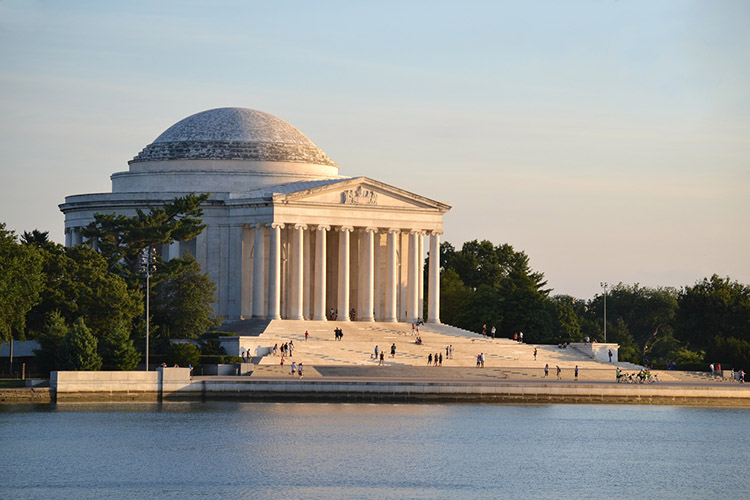
The Pentagon is a true American marvel. This immense structure is the largest office building in the world, claims four zip codes, and possesses a whopping six million square feet of floor space! The construction of the headquarters for the U.S. Department of Defense (once the U.S. War Department) has a storied history. The plans for the pentagonal design were based on the irregular shape of the proposed building site located east of Arlington National Cemetery. Plans for that location were scrapped, but the design and shape remained. In order to conserve precious steel at the start of WWII, the building is mainly constructed with reinforced concrete. Builders also placed a series of ramps throughout the building in lieu of steel elevators. The structure was limited to five stories in height and two subterranean floors, in another steel-preserving (and skyline-preserving) effort.
There is no housing at the Pentagon, so if you would like to live on post you will be choosing between Joint Base Anacostia-Bolling in Southwest D.C. or Joint Base Andrews in Maryland. When assigned to the Pentagon, service members often report to alternate locations. There are offices in Crystal City, Arlington where many spend their long work hours, while some even report to offices in D.C. or other installations.
The Pentagon is located on the very tip of Northern Virginia, just across the Potomac River from Washington, D.C. Joint Base Myer-Henderson Hall and Arlington National Cemetery are to the northeast, and Washington Reagan National Airport is its southeastern neighbor. The Metro’s Yellow and Blue lines stop at the Pentagon, and there are several other public transit options available for its almost 30,000 workers.
About Virginia, Maryland, & Washington, d.C.
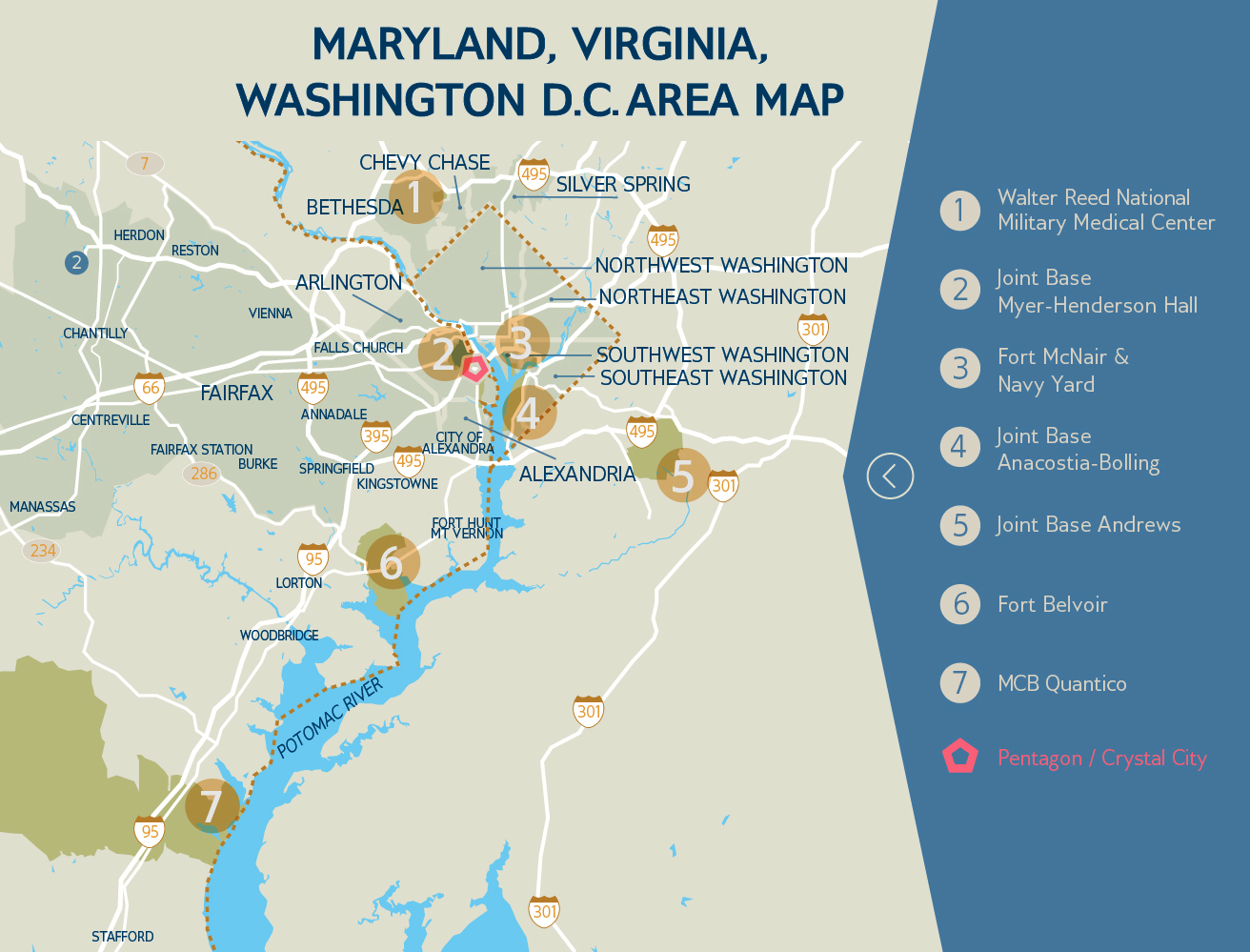
About
Orders to the D.C. area are often accompanied by excitement, followed by a wave of apprehension. D.C. is a massively complex metropolitan area and can be intimidating when deciding where to live. Getting over sticker shock, understanding the unique challenges of commuting around D.C., and managing expectations are key to finding the right place to live. But once you tackle all that, you can enjoy everything that comes with living near the nation’s capital!
While choosing where to live can be daunting, the great news is that once settled, most people love their bubbles! School choices, especially in Northern Virginia, are abundant and career opportunities abound as D.C. is host to professionals in a variety of fields.
The D.C. area, often referred to as the “DMV” (for D.C., Maryland, and Virginia), is one of the best assignments in the military for working spouses. Options abound, from full-time jobs to teleworking, but these opportunities come with additional considerations for finding a home. DMV traffic is among the nation’s worst, so finding a home with easy commutes to two separate jobs is no easy task.
On the upside, almost everything from parks to libraries, not to mention the museums, are well-funded and free to enjoy. Diversity and rich cultural experiences are plentiful, and the culinary scene is fantastic. Though the cost of living in this region is substantial, you can often find free activities and military discounts.
Professional sports teams include the Washington Redskins (NFL), Washington Nationals (MLB), Washington Capitals (NHL), D.C. United (MLS), and the Washington Wizards (NBA). People in the area tend to be busy and active, and there’s a competitive spirit that permeates all the way down to youth sports.
The weather is almost as intense as the people, with all four seasons in full bloom: hot, humid summers; mild, colorful falls; cold, harsh winters; and breathtakingly beautiful springs.
The first step in choosing where to live is to determine your priorities. There are three main values, if you will, to consider: Home Size, Home Price, and Commute. You will be able to secure one, and potentially even two, of those values—but rarely all three. On each page, we’ll break down some of the more popular areas for military families and explain which of these values you’ll be sacrificing to live there.
Pro Tip: If you come armed with this info before chatting with a real estate agent, they’ll have an enormous leg up in helping you find a home quickly. Efficiency and knowledge are crucial in this hyper-competitive real estate market.
Size
As with many urban cities and surrounding suburbs, the closer you are to D.C., the smaller and more expensive the home. If having a large home is a priority, you’ll be living farther out and suffering a longer commute.
Price
Your money goes further as you radiate away from the District. The “price” you’ll pay for affordability is spending lots of “quality time” in your car. If you LOVE your car, or need the time to decompress, go for it! There are also many alternatives to sitting alone in your car for precious waking hours like slugging, Metro, and VRE or MARC long-haul trains. Don’t worry, we’ll break it all down for you.
Conversely, in order to reap the benefits of a short commute and/or proximity to the District, you’ll likely need to be dual income and willing to spend a significant percentage of your income on housing, or be okay with a less-than-amazing-home.
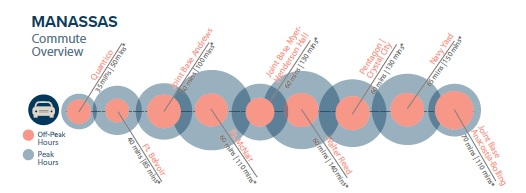
Commute
This is the big one. We cannot stress enough the importance of understanding the traffic situation! Listen up, because this can make or break your experience in the D.C. area.
Legendary congestion on all of the main highways, an almost incomprehensible number of people commuting into D.C., and the irregularities of road work, accidents, and weather, make commuting a primary challenge of life in the DMV. We’ve heard stories of two- to three-hour commutes one way, workers giving up and teleworking after moving 15 miles in two hours, and even people stopping off at a winery in the evening and trying again around 8:00PM (our personal favorite).
You absolutely cannot look at distance on a map and equate that to commute time. It could take you 30-plus minutes to drive eight miles in the city, and it’s a total gamble on the highways. Flex your creative commuter muscle and you can discover some workarounds to these headaches. Living close enough to bike or walk to your installation or in proximity to a Metro station will alleviate some stress, and reverse commuting can be a sanity-saver. Also, don’t let anyone tell you that any area is 20 minutes from all the bases. Just walk away from them. It’s so much more complicated than that. But don’t worry—we’ll give you the legit scoop.
Keep in mind, many people who are stationed at a D.C., Maryland, or Virginia base will work in multiple locations over the length of their time here. For example, those initially stationed at the Pentagon could report to Crystal City (Arlington) and then the following year be sent to Fort Belvoir (southern Alexandria) or Fort McNair (D.C.). You’ll want to have an idea of your spouse’s professional trajectory and consider that when choosing a home. Strike a balance for all possible assignments, or at least be okay
with the potential sacrifices.
Commuter Options
Metro – (Washington Metropolitan Area Transit Authority) Metro Rail serves D.C. and the surrounding areas with over 90 stations and more than 100 miles of track. The Metrobus supplements the rail system by connecting lines and stations to outlying communities.
Local Buses – Each jurisdiction has a local system that can also supplement the Metro system. If you are farther away from the District, you’ll rely on local buses more often.
Commuter Rails – Virginia Railway Express (VRE) and Maryland Area Regional Commuter (MARC) are long-haul rail systems for commuters.
DOD Shuttle – The Department of Defense operates a fairly robust shuttle system in the National Capital Region. This is a supplemental commuting option for many.
Bike/Run – There is an extensive multi-use trail system around the D.C. area and the surrounding bases. A lot of service members enjoy a scenic ride or run into work without the stress.
Driving – If you’ll be driving, familiarize yourself with HOV and Express Lane rules.
Ridesharing – There are all sorts of adaptations to carpooling. If you have three or more people in the car, you can take advantage of the HOV lanes (which can save you hours). Sometimes it’s tough to coordinate two other riders and destinations, therefore slugging was born. You can go to a designated slug lot and either line up to pick up passengers or hop in a car going in your direction—for free! There are websites and apps to help with coordination. Uberpool and Vanpooling are also variations of ridesharing.
Air Travel – Work trips, flights to see family, or vacations are easy with three large airports: Washington Reagan National (DCA), Dulles International (IAD), and Baltimore Washington International
(BWI).
Looking at relocating?
Enter your information below and we will reach out to help the process.
Nearby Neighborhoods
Nearby Neighborhoods:
- Alexandria
- Arlington
- Fairfax
- Washington, D.C.
- Southern NOVA
Alexandria
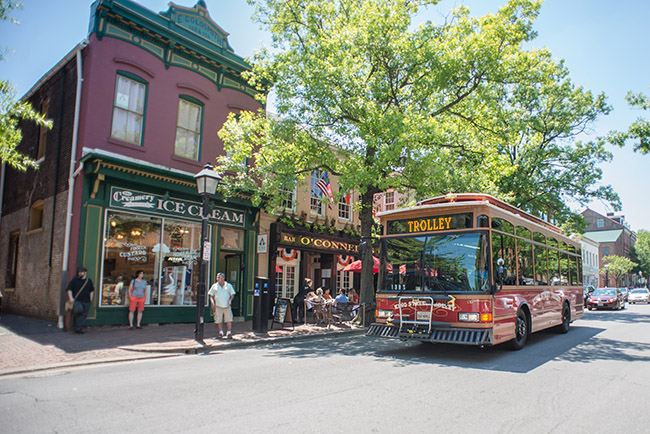
About
Alexandria has played a vital role in military history. Dating back to the 1750s, it was a staging area for British soldiers during the French and Indian War. It then functioned as an important supply center for Union troops during the Civil War. Today, Alexandria remains a gracious home to many of our nation’s service members and their families.
Located in the northeastern tip of Northern Virginia, Alexandria is just across the Potomac River from D.C. and Maryland. Because of the easy access to the District, Route 1, Interstate 395, the 495 Beltway, and the George Washington Parkway, this area is a popular choice for many military families commuting to most of the region’s installations. The City of Alexandria includes Old Town, Del Ray, Beverly Hills, and smaller neighborhoods inside the 495 Beltway. The more suburban areas of Alexandria are located outside the Beltway and are sometimes referred to as South Alexandria or Lower Alexandria.
Neighbors
Once home to George Washington and Robert E. Lee, Alexandria is a popular choice for military families and federal employees. Many large corporations, nonprofits, and national organizations have office headquarters in Alexandria, and employees stay close by if they can. Most of the professional and commercial focus is in the City of Alexandria, while the suburbs to the south are primarily residential. The residents are active, and there are always people taking advantage of the Mount Vernon Trail along the Potomac River. Your neighbors are likely to work in every conceivable corner of the D.C. Metro area.
Neighborhood Feel
Colonial-era architecture, cobblestone streets, waterfront dining, and a steady stream of tourists paint the backdrop for life in Old Town. Historic row houses line busy streets, and the abundant green spaces are filled with young residents. Del Ray and Beverly Hills boast more of a small-town vibe, with their own funky flair.
South Alexandria is a suburban haven. Families love the larger homes, big yards, and active communities. The subdivisions have a distinct ‘70s and ‘80s style. Most homes are split level and typically have basements. Children congregate on mature, well-maintained lawns after a swim in the neighborhood pool.
City of Alexandria
In the City of Alexandria, you’ll find young couples, small families, retirees, and a lot of singles. Fantastic restaurants, a sophisticated nightlife, cultural events, walkable shopping, and an energetic vibe are all found in Old Town. Your neighbors will work all over, and you’ll occasionally bump into your military kin. Tourists adore the area for its history, old
world elegance, and the respite it offers from the hustle of D.C.
Del Ray is a destination in and of itself. Quirky restaurants and shops, a small-town feel, and the absence of chain establish-ments attract the groovy, artistic souls. The homes are bursting with charm, and the residents rave about their commutes. Home values here are high, so military families you’ll encounter are either dual income or sacrificing on space for the quaint, eclectic vibe. This is an idyllic spot for brunch, a stroll down the darling “main” street, window shopping, and a stop for frozen custard.
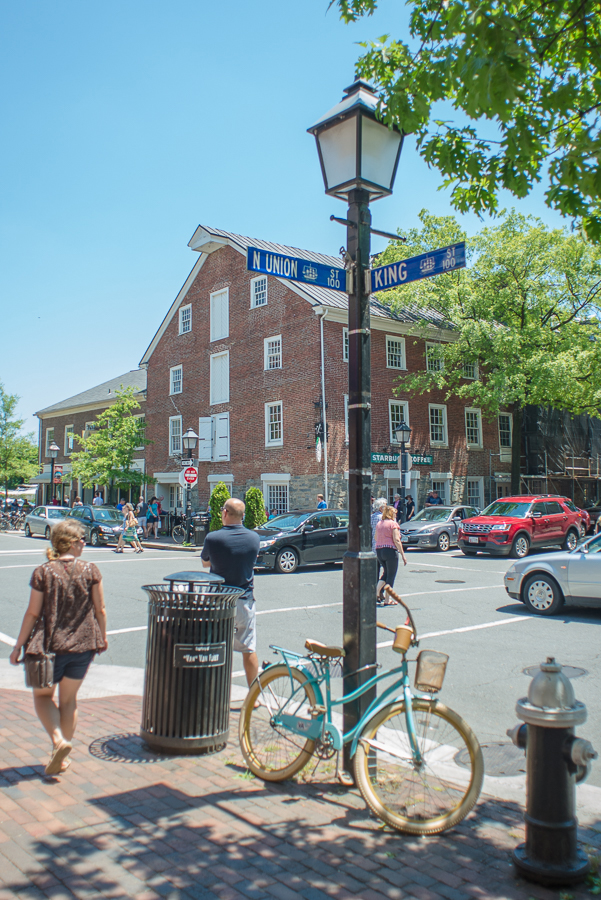
Home Size in the City of Alexandria
Home size is definitely going to be your sacrifice here. The most common dwellings, especially in Old Town, are townhomes and condos. Del Ray has some smaller bungalow-style homes, but a larger four bedroom can definitely cause sticker shock.
Home Pricing in the City of Alexandria
Location here is the key. With its proximity to the District, you’re going to pay a premium per square foot. A single family home will cost you significantly per square foot. As usual, purchasing a single family home will be more expensive than an apartment or condo style home in Alexandria. The same is true for rent values, an apartment or condo will save you money, but cost you space. Home values change rapidly in this market, so ask your real estate agent for a local market analysis.
By the Numbers
● Population: 159,700
● Household Income: $101,000
Commuting from the City of Alexandria
Commuting to Fort Belvoir from the city is considered a reverse commute, and you’ll be on the scenic George Washington Parkway, so enjoy the ride! Old Town to D.C. is not a great distance, but there is typically a lot of congestion going back and forth, so be aware of that especially if you’re going north in the morning. The Pentagon and Crystal City are very close, and Joint Base Myer-Henderson Hall is also an easy trip from here. We’ve even heard of people kayaking across the Potomac River to Joint Base Anacostia-Bolling on pleasant days. The Yellow and Blue Metro lines service Alexandria.
Fort Hunt/Mount Vernon
If you’re looking for the Mayberry feel, follow the Potomac River south to the Fort Hunt and Mount Vernon areas. This residential bubble was once one of George Washington’s farms, and his neighboring estate is a thriving tourist attraction. Military families are common, but by no means the norm. D.C. commuters like it here, and getting to Maryland is just a bridge away. Dual-income families (often with au pairs) are common in this affluent suburb.
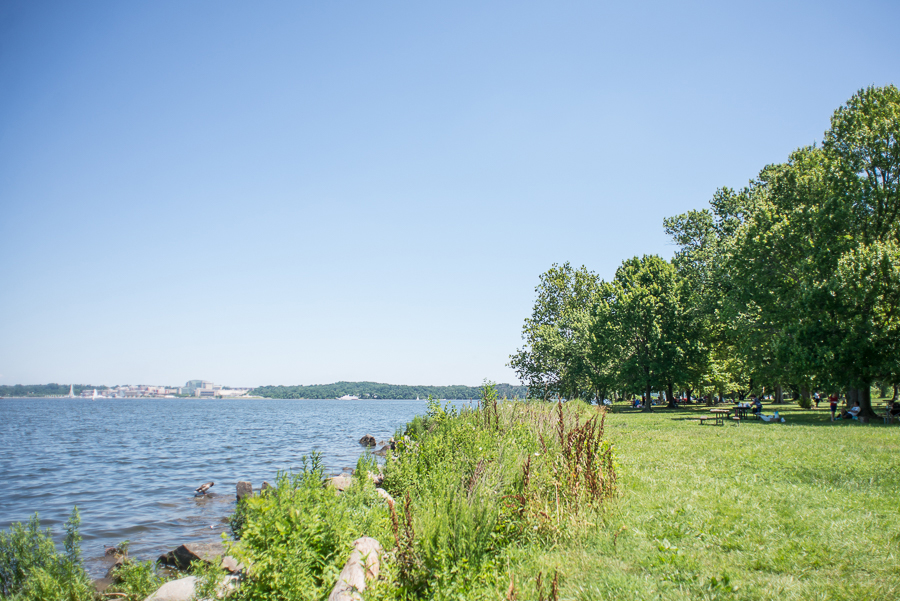
Fort Hunt
By the Numbers
● Population: 17,200
● Household Income: $188,100
Mt. Vernon
By the Numbers
● Population: 12,900
● Household Income: $146,300
Home Size in Fort Hunt / Mt. Vernon
For the most part, you can easily find single-family homes here that are around 3,000 to 4,000+ square feet, for a price. Most of the homes are 1970s-style split-levels, with a few variations on facades. Basements are very common, and yards are sizable. As with most of the region, homes move quickly and often by word-of-mouth. Sight-unseen rentals are common, and you’re definitely paying for location. You can find some small condos in Mt. Vernon, but for the most part you’ll find single-family home subdivisions in both areas.
Home Pricing in Fort Hunt / Mt. Vernon
The homes here are larger, and you’ll be spending a significant portion (if not more than) your BAH for the perks of scenic commutes and tight-knit suburban communities. As usual, purchasing a single family home will be more expensive than a condo style home in Fort Hunt or Mt. Vernon. The same is true for rent values, a condo will save you money, but cost you space in comparison to a single family home rental. Home values change rapidly in this market, so ask your real estate agent for a local market analysis.
Commuting from Fort Hunt / Mt. Vernon
The commute to Fort Belvoir from this area can’t be beat. You can go door-to door in 15 minutes on the George Washington Parkway, and the only traffic you’ll encounter is at the gate. Both Route 1 (more congested, but not as bad as the interstates) and the George Washington Parkway feed traffic directly into Crystal City, the Pentagon, and Joint Base Myer-Henderson Hall. Avoiding the interstate adds an element of predictability to your commute. If you’re headed north, getting through Old Town will be your biggest hurdle. There’s traffic from D.C., area
businesses, and generously placed traffic lights that all contribute to heavy congestion
during peak hours.
The Yellow Metro Line terminates at the Huntington Station, and it’s only a 5 to 10 minute drive from Fort Hunt. From here, the train takes 12 minutes to arrive at the Pentagon. This line also continues all the way into D.C. for excursions! Neighborhoods have local and express bus lines, and it’s also not unheard of to bike up the Parkway to work.
Kingstowne
Kingstowne is a planned urban community established in the 1980s and is still expanding. Homes of all sizes and styles are available, all brilliantly situated amongst grocery stores, shops, restaurants, gas stations, and a movie theater. Residing in Kingstowne also allows you access to the many community pools, parks, fitness centers, and community centers.
A lot of military families choose Kingstowne because of the convenient shopping and amenities, proximity to Interstate 395 and the 495 Beltway, the community vibe, and affordable prices.

Home Size in Kingstowne
Kingstowne homes vary widely in size, and there is something to suit just about every budget. There are apartments, townhomes, and large single-family homes to choose from.
Home Pricing in Kingstowne
Home values change rapidly in this market, so ask your real estate agent for a local market analysis.
By the Numbers
● Population: 16,800
● Household Income: $131,200
Commuting from Kingstowne
Kingstowne lies outside the 495 Beltway, but still allows easy access to both 495 and Interstate 395. The Franconia-Springfield and Van Dorn Metro stop in Kingstowne. Neighborhood carpools are popular to many of the nearby installations, and buses also operate within most neighborhoods.
Area Info | Alexandria
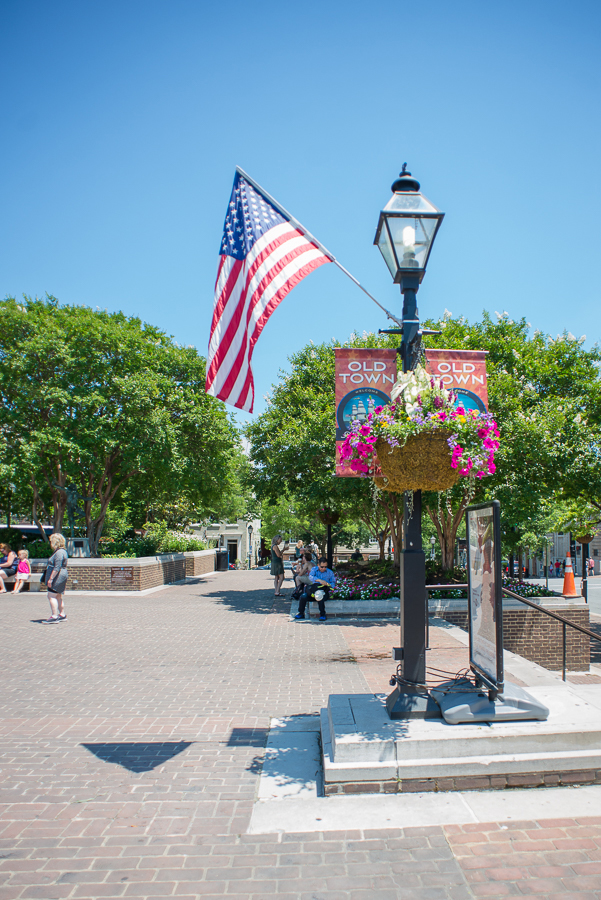
Points of Interest
● Old Town Alexandria – Historic District and Waterfront
● Mount Vernon Trail
● George Washington’s Mount Vernon Estate
● George Washington’s Grist Mill
● George Washington’s Masonic National Memorial
● Carlyle House – 18th Century Manor and Gardens
● Jones Point Park and Lighthouse
● Cameron Run Regional Park – Mini-golf, water park, and batting cages
Big Plus
● Alexandria is close enough to D.C. to still be a reasonable trip/commute, but you can also live a suburban life with ease. The farther south you go, the more space you can find, and most of Alexandria is out of the way of a lot of the commuter traffic. You’ll still find congestion on the larger roads (like Route 1), but you can navigate around it if you try.
● Maryland’s National Harbor is just across the Potomac, and there you can find outlet shopping, restaurants, and family attractions. They host summer movies on the beach and the Capital Wheel, a 180-foot-high Ferris wheel, is a favorite for both the young and the young at heart! The bridge to Maryland
also makes it possible to commute to Joint Base Anacostia-Bolling or Joint Base Andrews from Alexandria.
● Commuting on the George Washington Parkway is a real treat. You can go south to Fort Belvoir or north to the Pentagon, Crystal City, Joint Base Myer-Henderson Hall, and even into D.C. Following the river is a tranquil change of pace from the interstate traffic. Need a dose of patriotism along with your morning coffee? Look up and see if you can spot one of the Parkway’s nesting bald eagles soaring overhead.
Things to Consider
● Home values are high here, and you sacrifice space as you get closer to the District. Though you can find much larger homes farther south in Alexandria, don’t expect them to be fully renovated or updated. Homes from the 1970s and 1980s have a very distinct retro style, and finding a modern “open floor plan” or a new build will be a challenge.
● A lot of the families we spoke with freely admitted that in order to get a home they wanted here they were willing to go over BAH for housing costs. The perks of convenient commutes, proximity to the District, great schools, and tight-knit communities were enough to make the sacrifice worthwhile.
By the Numbers
● Population: 159,500
● Household Income: $101,000
● Median Home Value: Home values change rapidly in this market, so ask your real estate agent for a local market analysis.
School Scoop
● The City of Alexandria has its own school district which is not zoned to Fairfax County Public Schools.
● In Alexandria City Public Schools, all students must register in their home school, even if you plan to use the transfer program offered by the district to opt into one of three specialty schools: Jefferson-Houston School’s PreK-8 IB School, Mount Vernon Community School’s Dual Language Program/John Adams Elementary School’s Dual Language Program, or Samuel W. Tucker Elementary School’s Modified Calendar Program. These schools are only open to transfers based on capacity limits.
● Foreign language immersion programs are popular, and currently there are a dozen schools in Fairfax County that offer five different world language programs starting in kindergarten or first grade. County-wide Lottery Schools are open to all Fairfax County residents through a lottery process. School-Based Lottery Schools are only open to residents who live within the boundaries
of these schools.
● Virginia does not follow Common Core standards, so you will want to be acquainted with the Virginia Department of Education Standards of Learning (SOLs) to be sure that your student is prepared, especially when transferring from a Common Core state.
Highlighted Areas
● Del Ray
● Beverly Hills
● Old Town
● Waynewood
● Riverside Gardens
● Stratford Landing
● Collingwood
● Kingstowne and its
many subdivisions
Arlington
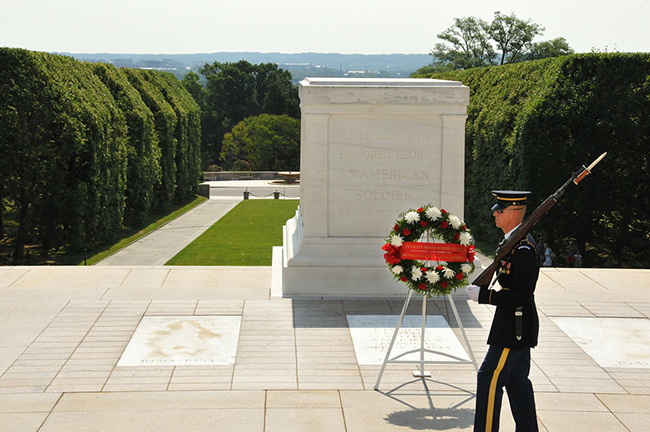
About
Arlington is guaranteed to come up as a top recommendation in any conversation about living in the D.C. area. Located just across the Potomac River from Washington, D.C., this urban county is home to many distinct neighborhoods as well as one of the nation’s most vibrant and diverse populations.
Living in Arlington places all of D.C. at your fingertips, without the city-living prices. The Metro system (rail and bus) is robust, and there are multiple commuter options to choose from—no matter the destination! Top-notch restaurants are infused with the international influences of its residents. Walkable neighborhoods, year-round cultural events, festivals, concerts, and ample green spaces urge you outdoors. Amenities like same-day Amazon and restaurant and grocery delivery are available, as well as many other urban-living tech staples like Uber, Lyft, and GrubHub. Car- and bike-sharing companies are flourishing, and “going one car” is a popular way to offset expenses.
North and South Arlington are bisected by Route 50 and have their own unique characteristics. Generally, the farther north and west you go, the more grandiose the homes. Commuting to most installations is reasonable with easy access to multiple highways and Metro stops.
Neighbors
Arlingtonians are civilians, government workers, contractors, and all manner of professionals. Military retirees often take advantage of the healthy job market in the government and private sectors. Given the proximity to the Pentagon, you will also reside amongst many of your military counterparts from all branches. Dual-income households are common. Singles and young couples without children will often congregate in the hip Ballston, Clarendon, or Courthouse neighborhoods, while small families and those on a budget gravitate towards South Arlington. Larger families and those willing and able to spend more on housing tend to live farther north.
Neighborhood Feel
You’ll find condos, townhomes, row houses, bungalows, brick colonials, and grand estates in Arlington. The area is hilly (more so in North Arlington), so it’s common to see homes and front yards raised and supported by retaining walls. Single-family homes are available starting north of Crystal City, and even though they may be a bit smaller than what you’re used to, the yards are reasonably sized. Many of the area’s homes date back from the 1920s to the 1940s and have retained their charm. The neighborhoods in North Arlington tend to have been developed by State Department and other government workers in the 1960s, but almost any home built during that period is likely to be heavily renovated or on the chopping block to be demolished for a new build.
North Arligton
In North Arlington, you’ll find rolling hills and deep pockets. It is home to some of the area’s most affluent and influential. The homes trend toward the grand colonial style, ornamented with manicured lawns and luxury cars. As you traverse the county farther south, the trees thin out, the hills soften, and prices deflate a bit, giving way to more affordable homes.
There is a swath of neighborhoods near Route 50 (the North/South divide) that most military families tend to focus on Westover, Clarendon, and Ballston just to name a few. The short commute to the Pentagon and Crystal City is a key perk for the area, as well as the easy access to D.C. Joint Base Myer-Henderson Hall lies on the Arlington side of
the Potomac River, and getting to Fort Belvoir is a reverse commute to neighboring Alexandria
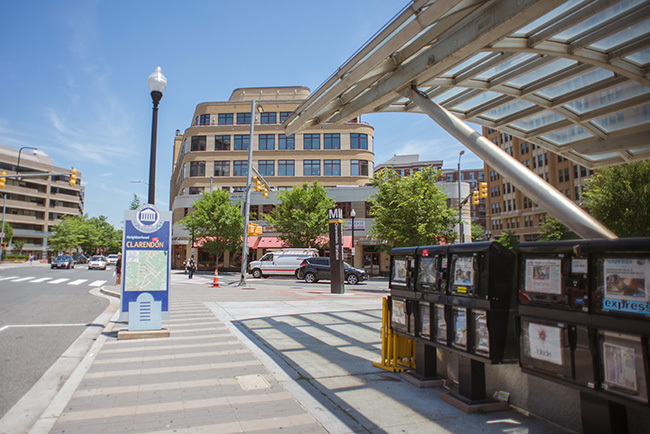
Home Size in North Arlington
The homes in North Arlington tend to be quite large farther north (3,500 to 4,500+ square feet) and gradually decrease in size as you head south (1,500 to 2,500 square feet).
Home Pricing in North Arlington
Land is scarce here, and some of the affordable homes are being bought, torn down, and replaced with new builds. Keep that in mind when you see a crazy price tag on a small fixer-upper. Home values change rapidly in this market, so ask your real estate agent for a local market analysis.
Commuting from North Arlington
One of the main perks to living anywhere in Arlington is the multitude of commuter options. It is very common for people to bike or walk to work here. There are two Metro lines (Orange and Silver) that service North Arlington. Additionally, there are DoD shuttles as well as Metro Bus and local bus options. Joint Base Myer-Henderson Hall is going to be the closest installation, followed by the Pentagon, Crystal City (where some assigned to the Pentagon will report), and then the installations in the District.
South Arligton
South Arlington checks off all of the real estate boxes for most military families. Along Route 50 there are some fantastic neighborhoods that are affordable and have single-family homes as well as townhomes large enough for a family. Places like Arlington Heights, Alcova Heights, Penrose, and Barcroft all came highly recommended from the spouses we’ve spoken with. Detached homes and townhomes give way to high-rise apartments and condos the closer you get to Crystal City.
Crystal City makes up a large part of South Arlington, and the residences in or near this urban matrix of office buildings are typically multi-family dwellings. Oftentimes, apartments or condos come with perks such as gyms, community areas, storage and parking.
South Arlington is home to an eclectic and diverse community that has embraced a number of immigrant groups with rich cultures. Most of the area is walkable, and the residents are active.
Home Size in South Arlington
Condos and high-rise apartments in Crystal City are typically one or two bedrooms. As you go farther north and west, the homes gradually grow in size and give way to townhomes and detached bungalows.
Home Pricing in South Arlington
Home values change rapidly in this market, so ask your real estate agent for a local market analysis. Most of the inventory in Crystal City consists of smaller condos and apartments. Home values rise near the boundary of North and South Arlington. Land is scarce here, and some of the affordable homes are being bought, torn down, and replaced with new builds. Keep that in mind when you see a crazy price tag on a small fixer-upper.
Commuting from South Arlington
Most of South Arlington is accessible from Route 1, and from there you can hop on either Highway I-66 or I-395. Biking or walking to work is popular here, and there are a number of public transit options available to those in South Arlington
Area Info | Arlington
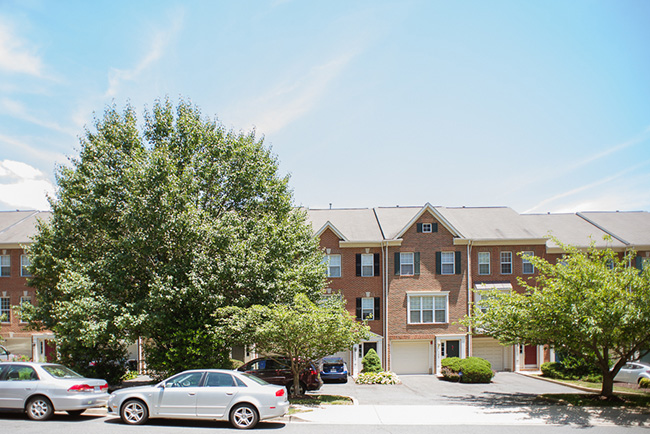
Big Plus
● There is so much at your fingertips in Arlington! A trip to the city is easy, with bus and/or Metro stops, and within walking distance in some cases. Hop on the Metro and take the kids to the National Zoo for a free playdate. Walk to the corner bodega for bagels and coffee. Without the pressure of
“getting home by 3:00PM to beat traffic,” your options for entertainment, shopping, and outings really open up. You’ll see what we mean on other pages. We’re really not kidding about the traffic. You’ve also got easy access to just about anywhere due to the robust roads, highways, and public transit options. Living in Arlington is like living in the District, but without the city expenses!
● With all the available commuting options, dropping down to one car is a popular way to offset housing expenses.
● Arlington has a stellar culinary scene and is a popular brunch destination. Places like Clarendon and Fairlington-Shirlington are known for their eclectic restaurants and hipster cafes. Whether fusion or authentic international fare, almost every cuisine imaginable is attainable.
Things to Consider
● Even though the price tags for purchasing a home can be intimidating, consider the market and how long you’ll be in the area. If
you’ll be here for more than three years, it may be worth making the investment. One spouse we spoke to told us that she was renting a 1,200 square foot home for $3,000/month, and when they decided to buy, her monthly expenditure for housing dropped to $2,300 for a MUCH larger home (2,200 square feet). Rentals are commonly priced at or above average BAH, no matter the condition of the
home.
● Availability is somewhat scarce and bidding wars are common. Having a real estate agent is highly recommended so that you can move quickly if you find something you love!
● Cost of living is higher here than in suburbs, but the trade-off for a short commute and proximity to D.C. is worthwhile for some.
By the Numbers
● Population: 239,000
● Household Income: $120,000
● Median Home Value: Home values change rapidly in this market, so ask your real estate agent for a local market analysis.
●From our research and from what we’ve gleaned from spouses in-the-know, home values in Crystal City (one to two bedroom condos),are lower than homes near the boundary of North and South Arlington. Home price skyrockets in North Arlington “proper.”
School Scoop
●The public schools in Arlington are part of Arlington Public Schools.
●Arlington Public Schools are highly recommended among the spouses we’ve spoken with. Arlington County has a lottery for students who would like to attend a school outside of the school they are zoned for. The curriculum is the same at all the schools county-wide, except those with magnet or year-round programs
●According to our focus group input, some standout elementary schools are Alice West Fleet Elementary School (formerly Patrick Henry Elementary), Arlington Traditional Elementary School, Taylor Elementary School, and Francis Scott Key Elementary School.
●According to the Arlington Public Schools‘ website, the richly diverse student body represents 147 nations, with 112 languages spoken!
●In Arlington, there are neighborhood schools and county-wide schools. If you would like your child to attend a school in a different neighborhood than where you reside, you may apply for a Pupil Transfer and participate in a lottery. Admittance is permitted on a space-available basis. There are also public Pre-K, immersion programs, charter schools, and Montessori options available.
●Virginia does not follow Common Core standards, so you will want to be acquainted with the Virginia Department of Education Standards of Learning (SOLs) to be sure that your student is prepared, especially when transferring from a Common Core state.
Highlighted Areas
●Arlington Heights
●Barcroft
●Arlington Ridge
●Alcova Heights
●Lyon Park
●Yorktown
●Westover
●Ballston
●Fairlington-Shirlington
Fairfax
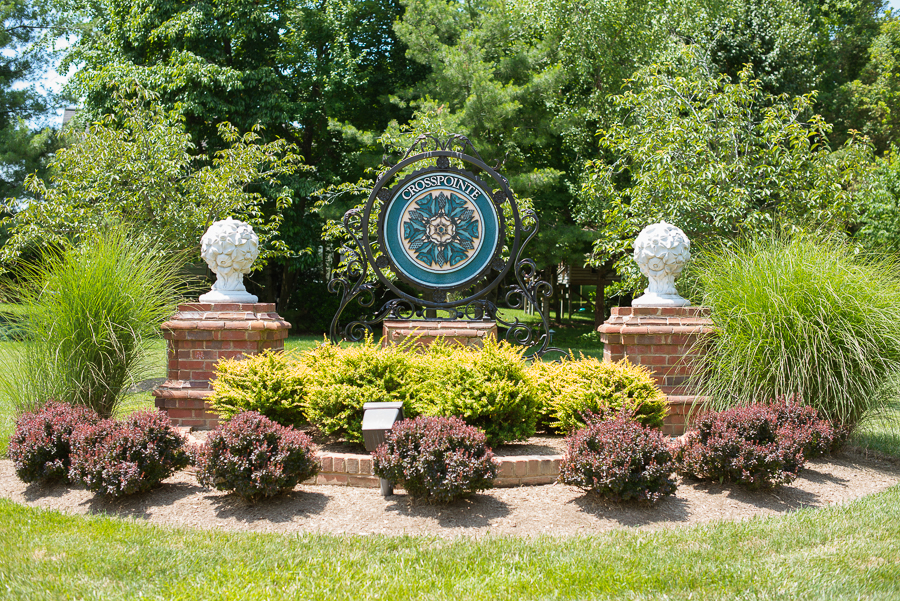
About
Fairfax County is one of the most populated metropolitan areas in all of the United States. The picturesque Blue Ridge Mountains lie to the west, with idyllic Atlantic beaches to the east. Civil War battlefields and historically significant sites sprinkle the southern edges of the county, and wineries and craft breweries are scattered throughout the region. Parks are abundant and meticulously maintained. The neighborhoods are well-established, and each community is anchored by the shared desire to escape the grind and pace of life in the District. Just to be clear, there is a City of Fairfax as well as the town Fairfax Station, but we’re referring to the greater Fairfax County.
Neighbors
You are likely to find people from all walks of life in Fairfax County. There really isn’t an easy, clear-cut way to categorize the one million-plus residents. Vibrant communities with diverse and culturally rich inhabitants are the norm. Over 30 percent of the residents speak a language other than English at home. There are multiple military installations located in the county, so you are very likely to reside near your military brethren, as well as all shapes and sizes of contractors, government employees, politicians, and professionals.
Neighborhood Feel
Most of the cities and towns in Fairfax County date back to the 1950s through the 1980s when suburban subdivisions and planned communities were becoming more popular. Community Associations are common, and along with that come amenities like pools, fitness centers, neighborhood parks, and well-maintained landscaping.
Falls church

This area is named after The Falls Church, an 18th century Anglican parish. Other areas that people typically associate with “Falls Church” are East Falls Church (technically in Arlington County), as well as Seven Corners and West Falls Church. The City of Falls Church has its own county-level government, much like Arlington, and operates its own independent public school district. Falls Church is right next door to Arlington and is still considered urban yet more affordable, with the same vibe and many of the same amenities. Walkability and prevalence of fantastic restaurants top our list of perks for Falls Church.
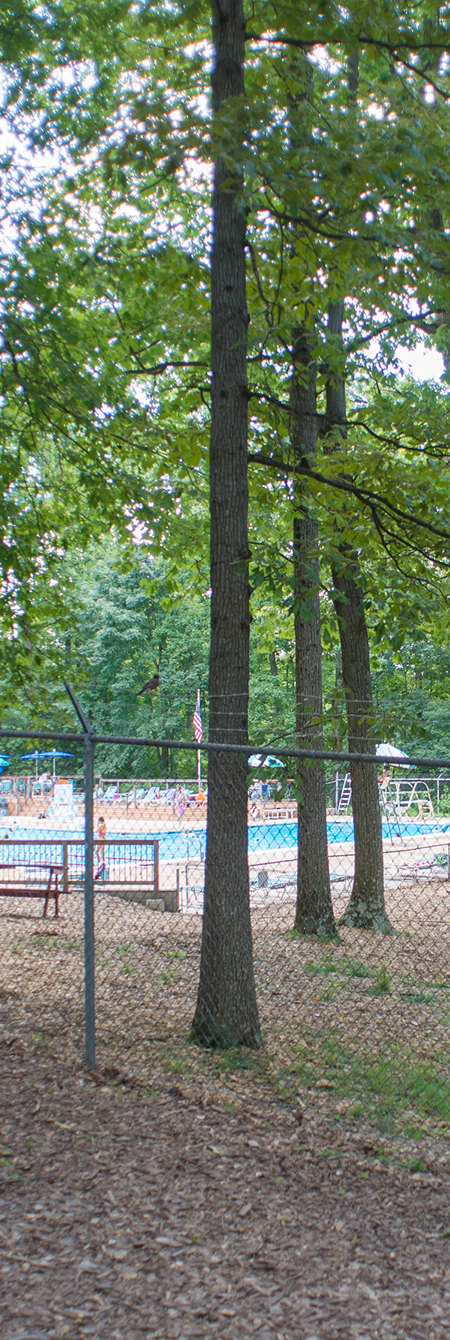
Home Size in Falls Church
Homes and rentals in Falls Church tend to be a bit larger than those in South Arlington but are still fairly small compared to the more distant suburbs.
Home Pricing in Falls Church
Home values change rapidly in this market, so ask your real estate agent for a local market analysis.
By the Numbers
● Population: 14,700
● Household Income: $127,600
Commuting from Falls Church
Because of its location inside the Beltway, getting around is fairly easy. Access to the major highways makes commuting con-venient, but you’ll still be contending with traffic. The Orange Metro Line stops in East Falls Church, and the Silver Line stops in West Falls Church, but you’ll still need to get yourself to the station. The Metro bus system has local routes in the area to supplement the Metro Rail. The Four Mile Run Trail also hooks up to the Mount Vernon Trail, making bike commutes to the District possible.
Annandale
Annandale is located just beyond Falls Church and is where you’ll start to see a more typical suburban lifestyle. The homes are less pricey than in Falls Church and much more affordable than in Arlington. It is primarily a residential area with a quiet, slower-paced vibe.
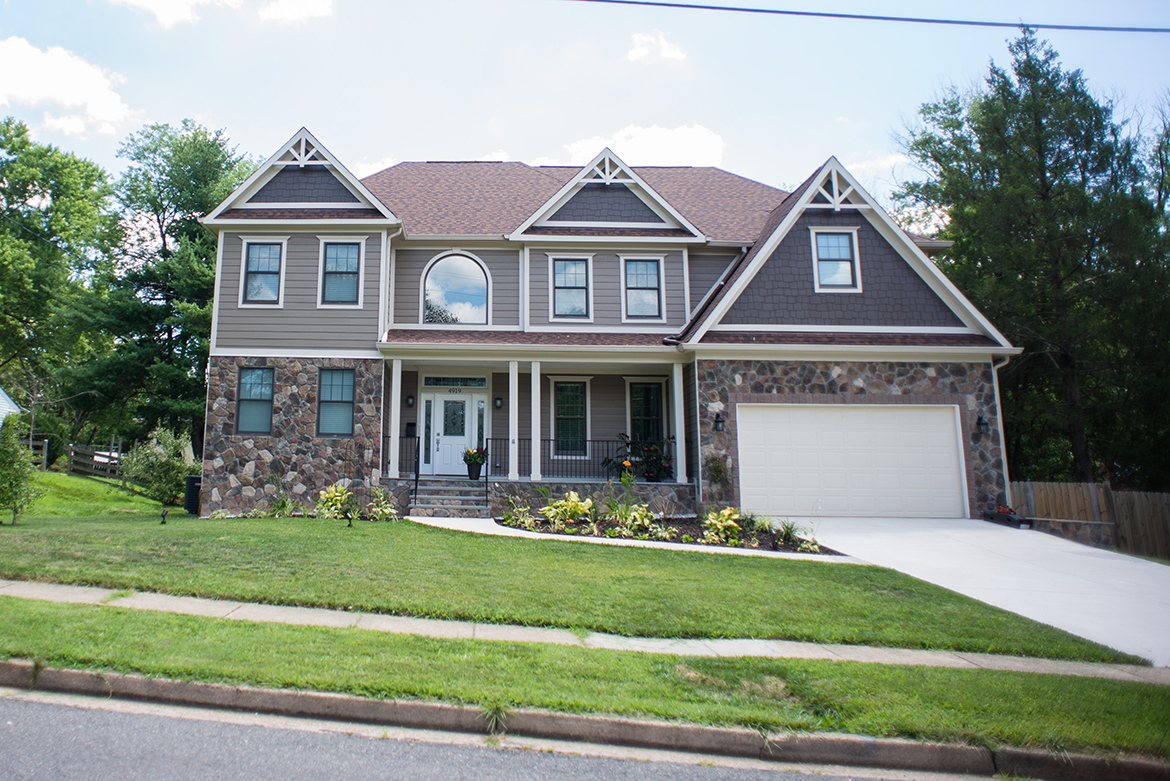
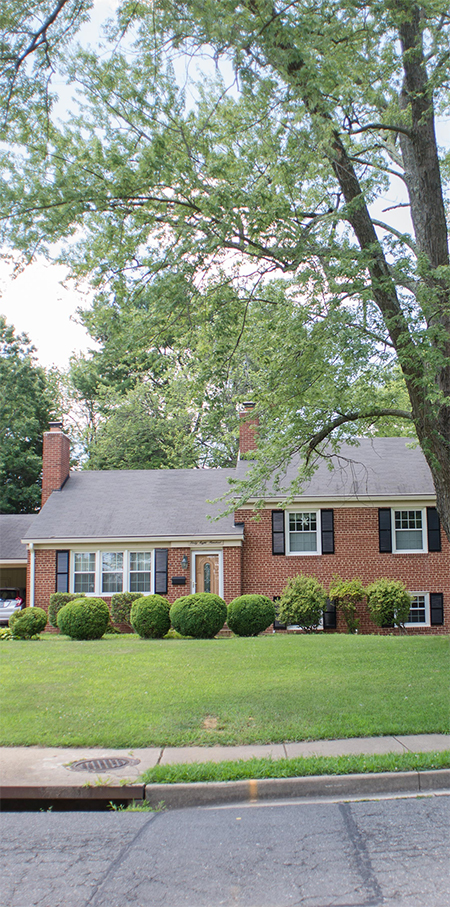
Home Size in Annandale
We’ll call the home sizes medium for Annandale. It is possible to find a home that is twice the size of a home in Falls Church for the same price in Annandale. Homes in the area are mostly single-family homes.
Home Pricing in Annandale
Home values change rapidly in this market, so ask your real estate agent for a local market analysis.
By the Numbers
● Population: 43,400
● Household Income: $96,500
Commuting from Annandale
You’re starting to get a little “far out” in Annandale, but the added commute is a worthwhile trade for those seeking a quiet refuge from the city. Annandale also has a ton of local bus routes. On the one hand, you won’t have to travel far to catch a bus, but on the other hand, you’ll have buses stopping at every other corner in your subdivision. Access to 495 is convenient for drivers as well.
Vienna
Vienna is located just to the west of the 495 Beltway and north of I-66. The homes here are huge and mega pricey. The area boasts a suburban feel with luxury amenities and a variety of stores for shopping. Wolf Trap Amphitheater hosts some of the area’s most exciting musical concerts and festivals, and Fairfax Square is renowned for its high-end shopping.

Home Size in Vienna
Homes in Vienna are grand and range from 3,000 to 4,600 square feet. You’ll find well-maintained homes with plenty of landscaped yard space. You’ll also be paying a pretty penny for it!
Home Pricing in Vienna
Home values change rapidly in this market, so ask your real estate agent for a local market analysis.
By the Numbers
● Population: 16,500
● Household Income: $161,200
Commuting from Vienna
Commuting from Vienna is quite the hike. At this distance, your options for biking to work basically disappear. There is a Silver Metro station at Tyson’s Corner, and the Orange Line stop is Vienna/Fairfax-GMU.
Reston
Reston is another Northern Virginia suburb a lot of people love, but it is a significant distance from most military installations. Its neighbor to the west is Dulles International Airport, so you’ll find workers from there living nearby. Home values are typically lower in Reston than in Vienna. Reston was designed by Robert E. Simon (hence RESton) and was the first planned community in post-war America. Established in 1964, it sparked a revival in planned communities nationwide. As a result, the area is great for families and has a nice, quiet pace.
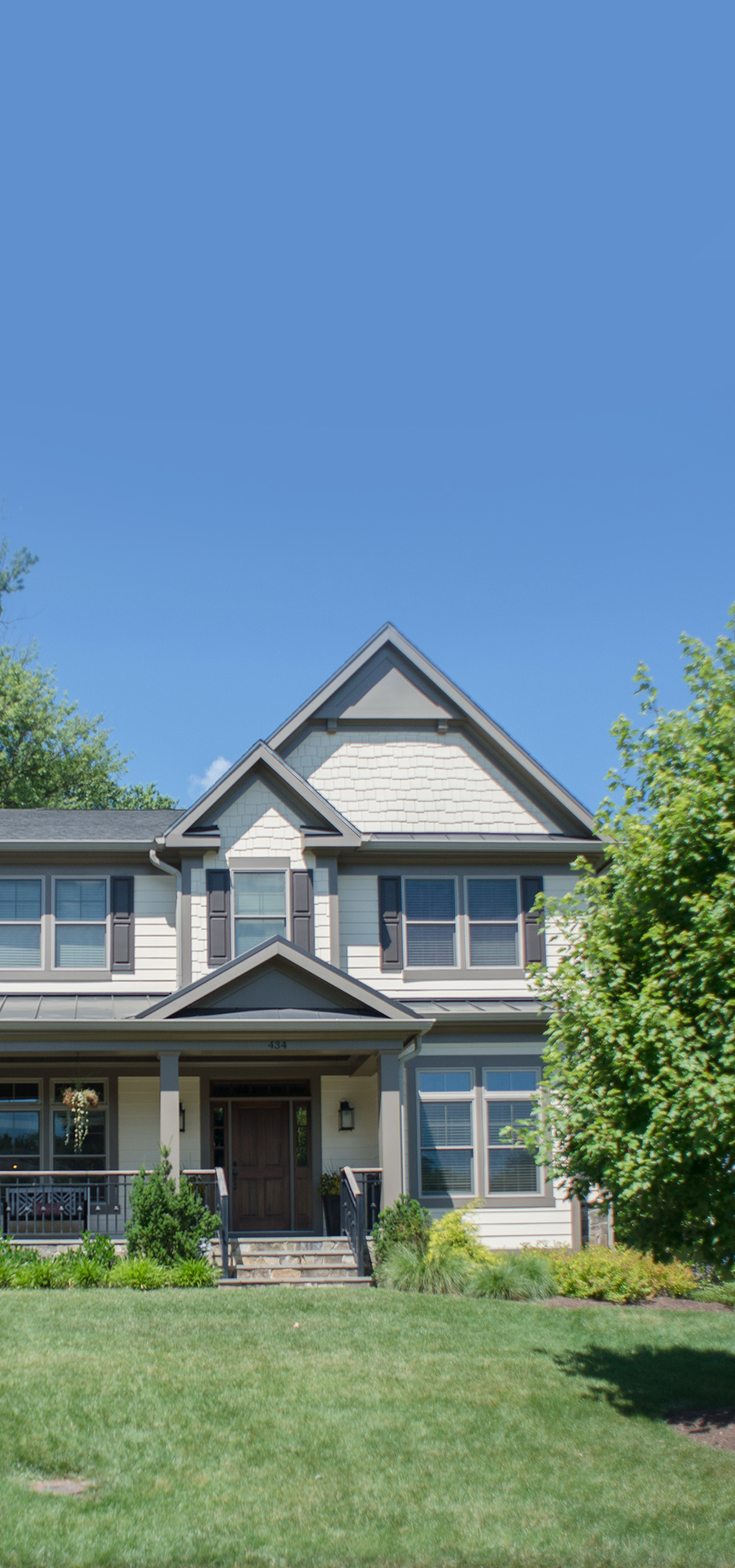
Home Size in Reston
Homes in Reston are predominantly single-family detached homes and have a good amount of square footage. There are some really cute lakeside “villages” worth checking out!
Home Pricing in Reston
Home values change rapidly in this market, so ask your real estate agent for a local market analysis.
By the Numbers
● Population: 63,200
● Household Income: $120,400
Commuting from Reston
This is a really hard commute to area military installations. There are a few government organizations that have offices scattered about the Dulles Corridor, so commuting to one of those may make more sense. Remember—the farther you need to travel on the highways, the more your commute time will expand. The Metro’s Silver Line services Reston via the Wiehle-Reston East Station.
Herndon
Herndon is your next stop going west on the Dulles Technology Corridor (DTC). This suburb frequently gets lumped together with its neighbor, Reston, and they share many of the same characteristics. We’ve heard Herndon described as a bit younger, but still extremely family friendly.

Home Size in Herndon
You’ll find mostly single-family homes in Herndon, with a few condos and apartments available in a variety of sizes as well.
Home Pricing in Herndon
Home values change rapidly in this market, so ask your real estate agent for a local market analysis.
By the Numbers
● Population: 24,700
● Household Income: $111,400
Commuting from Herndon
Driving is going to be stressful, and I-66 is a parking lot during rush hour. There are bus-to-Metro options available, but with multiple transfers that will significantly extend your commute. The closest Orange Line station is West Falls Church, and the Silver Line’s Wiehle-Reston East Station is not too far away.
SpringField
Springfield is centrally located in Fairfax County, and it straddles I-95. It’s northwest of Fort Belvoir and lies mostly outside the Beltway. Residents love the easy access to major highways. Commuting from Springfield to any of the Virginia bases and to D.C. is reasonable. The “West” side of Springfield is very similar to Burke but is a little less hilly and less walkable. Another relevant neighborhood com-parison would be to say that West Springfield and Springfield are similar to North and South Arlington, respectively. Housing costs are generally higher in West Springfield than they are in Springfield. Living in Springfield provides easy commutes and affordable homes, but the sacrifice is home size.
Home Size in Springfield
Most of the homes in Springfield are anywhere from 1,600 to 3,000 square feet and were built in the late ‘60s through the early ‘80s.
Home Pricing in Springfield
Home values change rapidly in this market, so ask your real estate agent for a local market analysis.
By the Numbers
● Population: 31,300
● Household Income: $101,800
Commuting from Springfield
Several main highways flow through the Springfield area, and the closer you can get to one of them, the better your commute will be. The Metro Blue Line services Springfield with the Franconia-Springfield Station, and there are multiple bus routes as well.
Burke
Burke is a family-friendly community with beautiful outdoor spaces. The area is more walkable than some of the busier suburbs because of the abundance of walking paths and concentrations of shops and restaurants. The communities are very tight-knit and resemble more of what military families are accustomed to. The parks are fantastic, and the shopping is convenient. The homes here are large and are nestled among rolling hills. You may also hear West Springfield lumped in with Burke as they are very similar communities.
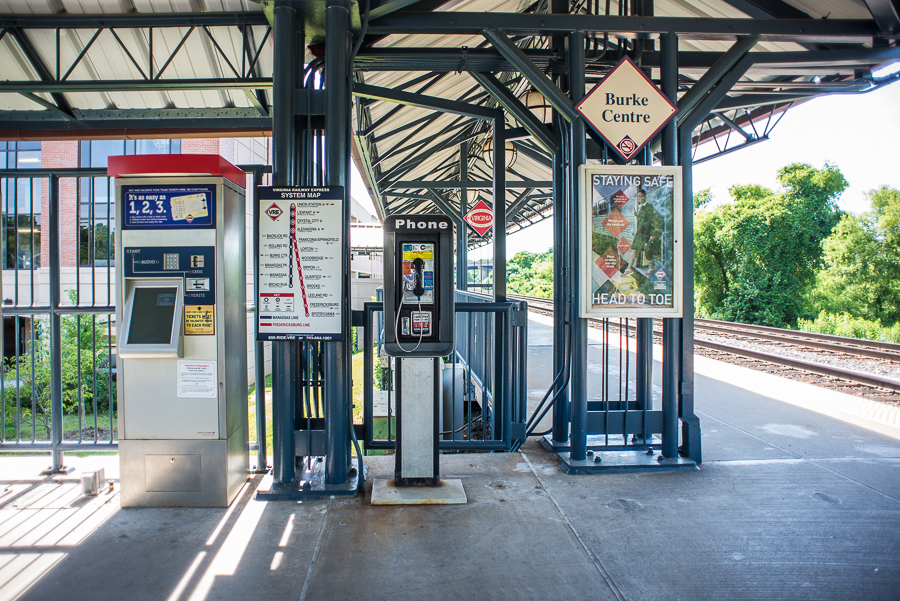
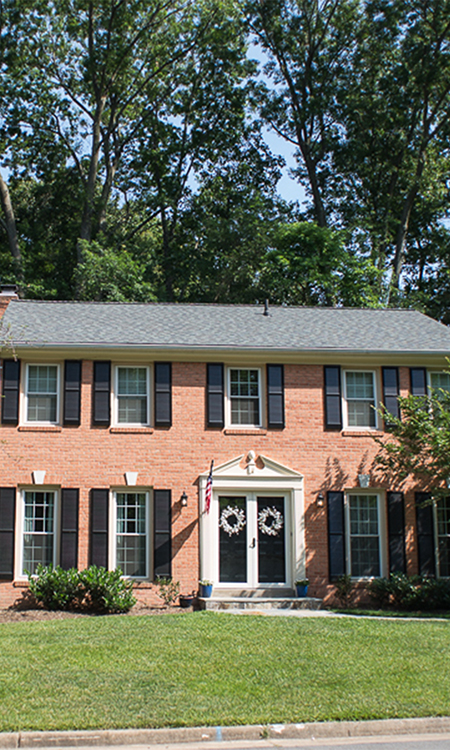
Home Size in Burke
You can get a lot more home for your money in Burke and West Springfield, but we’re not speaking to the age and state of the homes. According to the spouses we’ve spoken to, the sacrifice you’re making when choosing to live in Burke is going to be the quality of the home. While you can find some new builds sprinkled around, most of the homes are older and not often updated. You’re also not likely to find a flat backyard.
Home Pricing in Burke
Home values change rapidly in this market, so ask your real estate agent for a local market analysis.
By the Numbers
● Population: 42,300
● Household Income: $145,200
Commuting from Burke
It’s easy to get to I-95 or I-66, which makes commuting relatively easy, assuming you aren’t trying to get to or from D.C. during rush hour. The challenge will lie in how far you choose to live from the main highways. Commuting through the denser neighborhoods will add time to your drive, but once you’re on the highways the pace quickens up.
Fairfax Station
Fairfax Station is a beautiful community with large homes on forested land. Huge houses on large lots with hefty price tags can be found throughout Fairfax Station, and the commute to Fort Belvoir is reasonable. Located just west of Burke, you’re getting a little far away from most of the area installations. This pricey suburb has an abundance of community centers, pools, parks, and trails. While there are restaurants here, they’re mostly chains, and if you’re a foodie you may find yourself driving into Alexandria or Arlington for a bite.
Home Size in Fairfax Station
There are a variety of sizes and price tags to be found, but the homes tend to be on the large end of the spectrum. The houses are newer, and the older homes are typically updated.
Home Pricing in Fairfax Station
Home values change rapidly in this market, so ask your real estate agent for a local market analysis.
By the Numbers
● Population: 12,400
● Household Income: $177,600
Commuting from Fairfax Station
Commuting by car is most common in Fairfax Station, and slugging is popular. You’ll need to take the Metro Bus to connect you to the nearest Metro station.
Lorton
Just across the Occoquan River from Woodbridge in the “Lower Potomac” region lies the town of Lorton. This community is very popular for those reporting to Fort Belvoir (as it’s just south of the gate), as well as Marine Corps Base Quantico with the reverse commute. Townhouses and smaller homes are more common in Lorton, making affordable housing fairly easy to find. You’re also close to some fantastic shopping at Potomac Mills in Woodbridge.

Home Size in Lorton
Though there are many smaller homes and apartments available, most people love it for how much home they can buy for the money. You can find a large, 3,000-plus square foot home here with no problem!
Home Pricing in Lorton
Home values change rapidly in this market, so ask your real estate agent for a local market analysis.
By the Numbers
● Population: 20,100
● Household Income: $106,800
Commuting from Lorton
Both I-95 and Route 1 pass directly through Lorton, making trips north to Fort Belvoir and south to Quantico very convenient. The traffic is considerable on both of these arteries, but traveling south in the morning is considered reverse commuting.
Centreville
Continue west on I-66 to the outer edges of Fairfax County and you’ll come upon Centreville. The homes are large and much more affordable, but your commute is going to be taxing. The area is a little more spread out, and there are a few farms, but it’s definitely suburban.
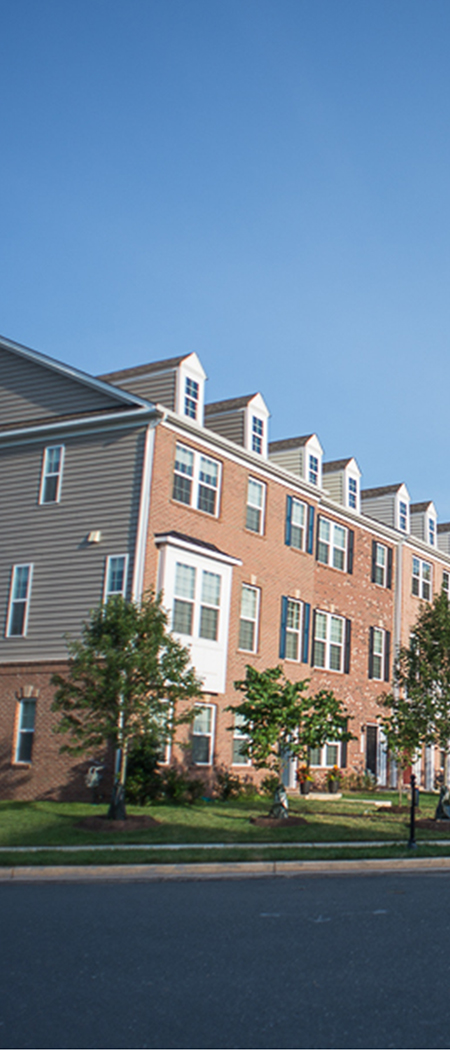
Home Size in Centreville
While most homes are medium sized, you can also find larger homes and even mansions in Centreville.
Home Pricing in Centreville
Home values change rapidly in this market, so ask your real estate agent for a local market analysis.
By the Numbers
● Population: 73,500
● Household Income: $126,900
Commuting from Centreville
Three large roads define the traffic flow for Centreville: Route 29, Braddock Road (SR 620), and Interstate 66. Most people we’ve spoken to have heavily cautioned against driving on I-66 with its nightmarish delays. There are bus routes that connect commuters to the Metro Rail.
Chantilly
Chantilly is another D.C. suburb with its own charm, but it is extremely far away from most installations. If you are stationed at the National Reconnaissance Organization (NRO), then Chantilly would be a wonderful choice. Other than that, you’d better love spending time in your car!
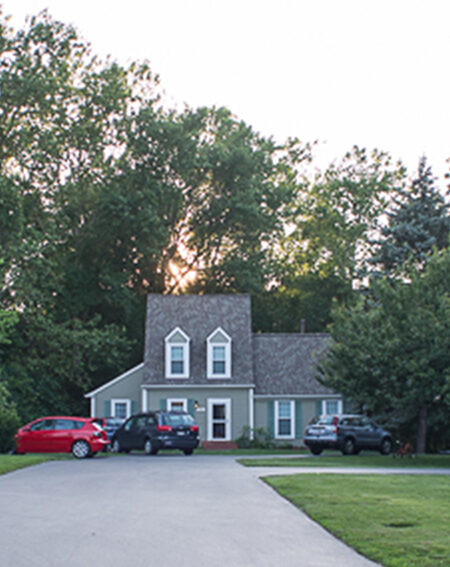
Home Size in Chantilly
Homes in Chantilly are large and affordably priced. You can easily find a nice home with upwards of 4,000 square feet.
Home Pricing in Chantilly
Home values change rapidly in this market, so ask your real estate agent for a local market analysis.
By the Numbers
● Population: 24,300
● Household Income: $124,900
Commuting from Chantilly
Commuting by car is your main option here, as mass transit services do not extend all the way to Chantilly.
Manassas
Manassas is a picturesque city that lies just beyond the Fairfax County line in Prince William County, Manassas City, and Manassas Park counties. Much like Arlington and the City of Alexandria, parts of Manassas operate their own school districts, Manassas City Public Schools or Manassas Park City Schools. Other parts of Manassas attend Prince William County Public Schools. The pace of life is slower, and Manassas is considered rural by D.C. standards. A quaint downtown and historic district are gems of this town. Affordable homes in a community with a strong “small-town” vibe are the perks for Manassas. The sacrifice is going to be a very long commute.
Home Size in Manassas
Homes can be found here in any number of styles and sizes to fit most budgets. A typical size for a single-family home is between 1,800 to 3,000 square feet.
Home Pricing in Manassas
Home values change rapidly in this market, so ask your real estate agent for a local market analysis.
By the Numbers
● Population: 42,800
● Household Income: $81,500
Commuting from Manassas
Amtrak and the VRE both serve Manassas. Commuting by car, though commonplace, involves a long drive and is fraught with traffic headaches.
Area Info | Fairfax
Points of Interest
● Great Falls Park, River Bend Park, Lake Accotink Park
● Smithsonian National Air and Space Museum’s
Steven F. Udvar-Hazy Center
● George Washington’s Mount Vernon
● Reston Town Center
● Tyson’s Corner Center
● Wolf Trap National Park for the Performing Arts
● Clemyjontri Park – All-inclusive park for all ages
● Water Mine Family Swimmin’ Hole
● Frying Pan Farm Park
Big Plus
● Fairfax County has a thriving economy that is practically recession-proof. Government jobs ebb and flow with the economy, and there is always private sector work to be found. The technology industry in Fairfax County boasts the largest concentration of tech jobs in the country at over 142,000.
● You will find such amazing diversity here in Northern Virginia. Yes, most people’s lives and work revolve around politics in one way or another, but boundaries and alternative points of view are respected and revered.
● Along with most of the publicly funded infrastructure, the healthcare system in Fairfax County is top-notch. With a budget larger than four states, it’s easy to see how residents benefit from robust public services.
● This area offers easy access to Dulles International Airport and Washington Reagan National Airport.
● It’s only a quick Metro ride or drive to all the museums, monuments, and history of Washington, D.C.
Things to Consider
● The traffic is insane. Never underestimate how long it will take you to go 10 miles, because we guarantee that it will take twice as long as you expect. Mitigate your stress levels by planning ahead and giving yourself
a healthy arrival buffer. The professional atmosphere is high stress and that manifests in the behavior of commuters. Try to find inner peace before your commute home, or you’ll just be a ball of nerves your entire time in the DMV area.
● Cost of living is high. Housing is expensive, restaurants are pricey, and even the Metro isn’t cheap. Taxes are reasonable in that you get what you pay for (fantastic parks, libraries, roads, recreation departments, health and safety services, etc.).
● There is a hyper-competitive culture and that mindset is manifested in work, school, sports, and even on the PTA. Channel your inner Tiger Mom or learn to go with the flow, but either way, you’d better own it!
By the Numbers
● Population: 1,150,000
● Household Income: $128,400
● Median Home Value: Home values change rapidly in this market, so ask your real estate agent for a local market analysis.
School Scoop
● Public schools in Fairfax belong to Fairfax County Public Schools and are well known across the country.
● Students may apply for a transfer to a school outside of his/her “base school,” as they call it. Transfers are only approved if space available and if the student meets the school’s transfer criteria.
● Some in Fairfax County may live in Falls Church, which has their own school district, Falls Church City Public Schools.
● Falls Church City Public Schools consists of five schools: a single school for pre-kindergarteners, a school for students in kindergarten through grade 1, a separate school for those in grades 2-5, a standard middle school with grades 6-8, and a high school.
● Foreign language immersion programs are popular, and there are currently a dozen schools in Fairfax County that offer five different world language programs starting in kindergarten or first grade. County-wide Lottery Schools are open to all Fairfax County residents through a lottery process. School-Based Lottery Schools are only open to residents who live within the boundaries of these schools.
● Virginia does not follow Common Core standards, so you will want to be acquainted with the Virginia Department of Education Standards of Learning (SOLs) to be sure that your student is prepared, especially when transferring from a Common Core state.
Highlighted Areas
● Falls Church ● Herndon ● Lorton
● Annandale ● Springfield ● Centreville
● Vienna ● Burke ● Chantilly
● Reston ● Fairfax Station ● Manassas
Northwest D.C

About
Northwest is D.C.’s largest and most “postcard-worthy” area. Extending north of the National Mall and west from North Capitol Street (the street that extends from the Capitol Building), Northwest is home to many of the District’s wealthier neighborhoods.
Each neighborhood has its own unique personality, and if you are willing to make the financial sacrifice, there are limitless opportunities for an incredible city-life experience. Northwest is very walkable, so ditch one (or both) cars and embrace the public transit system. The restaurants are world-class, the shopping rivals any other metropolitan city, the history is inspiring, and there’s a story on every corner.
Neighbors
The variety of people you’ll find in Northwest D.C. is almost impossible to describe. Some neighborhoods are swanky and affluent, home to the nation’s most powerful and influential people. Other neighborhoods are populated with students and young professionals trying to work their way up the D.C. ladder. Singles and young couples love Adam’s Morgan, Dupont Circle, and Penn Quarter for the social scene. Most military families we’ve spoken to have focused on other areas in search of something a bit more affordable.
Neighborhood Feel
Close to the heart of the District, you’ll find high-rise apartments, condo buildings, and rowhomes. Space is at a premium, and you’ll be spending a pretty penny for housing. To find something large enough for a family, you’ll need to set your sights on neighborhoods a bit farther out. Traveling away from downtown, the square footage increases and the sporadic trees thicken to become wooded spaces. Upper Northwest is less densely populated, yet still very walkable and offers all the shopping and amenities you can imagine.
Area Info | Northwest D.C.

Points of Interest
● Friendship Heights Shopping
● Rock Creek Park
● Hillwood Estate, Museum, and Gardens
● National Cathedral
● The White House
● Smithsonian National Zoo
Big Plus
● The restaurants in Northwest are incredible. You can find anything you can dream of, in any price range. Because of the international diversity of D.C., you can find ethnic food from around the globe in addition to boutique cupcakeries, dive diners, celebrity chef powerhouses, and everything in between.
● Visitors flock to Northwest neighborhoods for the shopping and social scene. Looking for boutiques with couture clothing, bespoke
suits, and luxury designers? All can be found in Northwest along with department stores and chain retailers. There are also farmers’ markets and flea markets with funky vintage finds.
● Parks and green spaces are in high demand because of D.C.’s active and outdoorsy residents and are plentiful in Northwest. Rock Creek Park is a local favorite and even offers horseback riding throughout the park.
● The public transit is easily accessible from nearly everywhere in Northwest. If there isn’t a Metro station within walking distance, bus lines are plentiful, or you can just grab a bike from the bike share rack!
Things to Consider
● Northwest is expensive. There are more affordable neighborhoods in other quadrants of D.C., but Northwest typically gets all the love.
● The military spouses we’ve spoken with recommend doing your research when it comes to schools, as they tend to prefer other districts. There is a lottery for D.C. schools if your neighborhood school doesn’t excite you, and D.C. offers free public preschool!
● Buying or renting a home sight unseen is not recommended, you’ll want to get a feel for the neighborhood before you move here.
By the Numbers
● Population: 690,000
● Household Income: $86,400
● Median Home Value: Home values change rapidly in this market, so ask your real estate agent for a local market analysis.
School Scoop
● Northwest Washington, D.C. contains around 21 schools which fall under either the District of Columbia Public Schools (DCPS), or Washington Latin Public Charter schools.
● You have the option of enrolling your children in any school that they aren’t already zoned to in the District of Columbia Public School system through the DCPS one-stop shop lottery system. Lotteries are available for preschool programs (3- and 4-year olds), out-of-boundary schools K-12 (those outside your zone), selective high schools, and charter schools. Spots fill up, so make sure you enroll as soon as the lottery opens in their online system.
● Military families may apply for the DCPS Lottery before you have orders by working with your School Liaison Officer (SLO). If you have a middle or high schooler, it is highly recommended that you consult with your SLO to discuss options for school choice in the D.C. area. That recommendation is emphasized even more if you have a child who is gifted, has an IEP, or has any other specific needs.
● D.C. preschools are publicly funded (FREE) and fill quickly. It is recommended that you enroll early in a preschool, or Child Development Center (CDC), near your home because bus transportation is not available at this age.
● Beginning in 2016-2017, some DCPS schools began operating on an Extended Year calendar that allows for a longer school year with more frequent breaks.
Highlighted Areas
● Penn Quarter
● Foggy Bottom
● Georgetown
● Dupont Circle
● Adams-Morgan
● Columbia Heights
Southwest D.C.
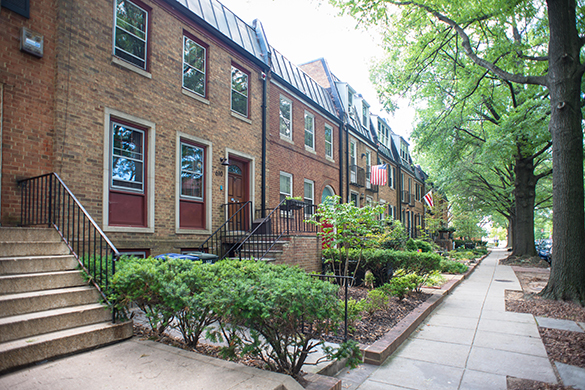
About
Southwest is the smallest of Washington, D.C.’s quadrants, but if you’ve visited the Nation’s Capital you’ve probably been there. The boundaries of Southwest extend from the axis of the Capitol Building west for the entire length of the National Mall, and south to include Joint Base Anacostia-Bolling across the river. Today, it is only a small sliver of the District, but it wasn’t always so small. When the lines were drawn for D.C., the District formed a square and included Arlington County and the City of Alexandria. However, in the 19th century the District ceded Arlington and Alexandria back to the Commonwealth of Virginia.
Though not often mentioned as a residential area, there is a lot of focus on developing the riverfront just north of Fort McNair. This up-and-coming area will be home to multiple high-rise condo buildings, luxury hotels, local and national brand shops and restaurants, a marina with hundreds of boat slips, parks, and community spaces—so definitely be on the lookout for a migration of young professionals to the Southwest Waterfront.
Most notably, Southwest is where you’ll find the National Air & Space Museum, the Jefferson Memorial, the Lincoln Memorial, and the Washington Monument. Fort McNair and Joint Base Anacostia-Bolling are also in Southwest D.C.
Neighbors
The areas near the National Mall are tourist-heavy with the abundance of monuments and attractions, but the throngs of visitors thin out dramatically as you travel south. The high-rise apartments and condos will most likely attract young professionals, couples, and possibly families with a small child or fur baby who won’t need a ton of space. You’ll find hipsters, thespians, working class people, and retirees in Southwest.
Neighborhood Feel
Southwest is one of the more historic areas in the District with some homes dating back to the 1700s. This history is colliding with the new waterfront development that will likely be one of the hottest new neighborhoods in D.C. This represents a broader transition from being an often-overlooked area to an active, thriving, urban community with street-level shops and eclectic residents. The Southwest Waterfront also currently boasts the largest population of “liveaboards” on the East Coast—as in, they live aboard their boats! Most of the homes currently available range in style from 18th Century Federal to Mid-Century Modern, with many high-rise buildings that date back to the 1950s scattered about. Stunning views of the Potomac River abound, and residents love being within walking distance to the National Mall. The communities are pretty tightly knit, and it’s much less crowded than the more notable tourist destination neighborhoods in the District.
Area Info | Southwest D.C.
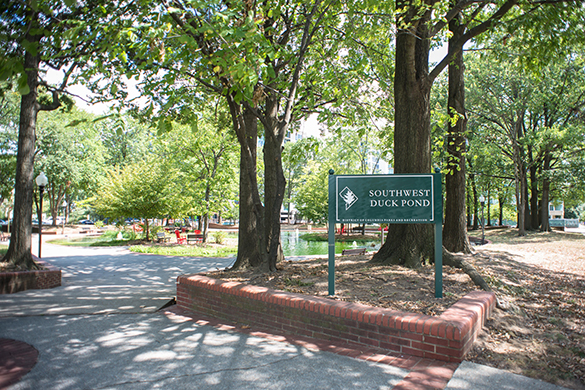
Points of Interest
● Smithsonian National Museums
● Washington Monument
● National Air and Space Museum
● Lincoln Memorial
● Thomas Law House
● Wheat Row
● St. Dominic’s Church
● East Potomac Golf Course and Driving Range
● West Potomac Park
● Arena Stage at the Mead Center for American Theater – Tony
Award winning theater
● Municipal Fish Market – The oldest continuously operated open air fish market that dates back to 1805!
Big Plus
● This is an ideal location for those reporting to Fort McNair, but larger families tend to migrate to Northern Virginia in search of more space.
● Public transit is incredibly accessible from the Southwest Waterfront. The Waterfront Metro Station (Green and Yellow lines), L’Enfant Plaza (Green, Blue, Orange, Yellow, and Silver), and Federal Center (Silver, Blue, Orange) are all nearby. It’s only 4.5 miles away from Reagan National Airport, and Union Station is easily accessible as well.
● Southwest is a really great location. You’re close to all of the beloved attractions at and near the National Mall, just a bridge away from Old Town Alexandria, and not far from Arlington.
Things to Consider
● Buying or renting a home sight unseen is not recommended, you’ll want to get a feel for the neighborhood before you move here.
● Until the new developments are completed, there’s a limited amount of inventory available.
● There is a lottery for D.C. schools if your neighborhood school doesn’t excite you. However, that means you could be spending a good portion of your day driving your kids to and from school.
Highlighted Areas
● National Mall
● Federal Center SW
● Southwest Waterfront
● Buzzard Point
● Bellevue
By the Numbers
● Population: 690,000
● Household Income: $86,400
● Median Home Value: Home values change rapidly in this market, so ask your real estate agent for a local market analysis.
School Scoop
● Schools in Southwest Washington, D.C. are a part of the District of Columbia Public Schools.
● You have the option of enrolling your children in any school that they aren’t already zoned to in the District of Columbia Public School system through the DCPS one-stop shop lottery system. Lotteries are available for preschool programs (3- and 4-year olds), out-of-boundary schools K-12 (those outside your zone), selective high schools, and charter schools. Spots fill up, so make sure you enroll as soon as the lottery opens in their online system.
● Military families may apply for the DCPS Lottery before you have orders by working with your School Liaison Officer (SLO). If you have a middle or high schooler, it is highly recommended that you consult with your SLO to discuss options for school choice in the D.C. area. That recommendation is emphasized even more if you have a child that is gifted, has an IEP or has any other specific needs.
● D.C. preschools are publicly funded (FREE) and fill quickly. It is recommended that you enroll early in a preschool, or Child Development Center (CDC), near the base because bus transportation is not available at this age.
● Beginning in 2016-2017, some DCPS schools began operating on an Extended Year calendar that allows for a longer school year with more frequent breaks.
Northeast D.C.
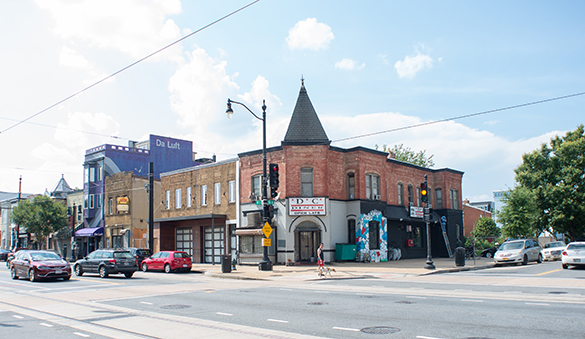
About
Northeast is a much-overlooked quadrant of D.C. that has many up-and-coming neighborhoods with affordable homes, condos, and plenty of fixer-uppers in transitioning neighborhoods. Hipster destinations like NoMa (North of Massachusetts Ave.) and the H Street Corridor are trendy locales with nightlife, more affordable housing, and easy Metro access. The northern part of Capitol Hill lies within the Northeast boundary as well. The rail hub, Union Station, makes trips up and down the Eastern Seaboard convenient. Northeast is also home to the National Arboretum and Gallaudet University (a renowned school for the deaf), and the Motown icon Marvin Gaye grew up in Deanwood.
The area is rich in African-American history, and there are some areas east of the Anacostia River that have morphed from plantations into some of the city’s first majority African-American communities. The diversity that exists here has unfortunately led to some unfair categorizations, but there are many gems to be discovered in Northeast!
Neighbors
D.C. residents are usually typified as active and outdoorsy, and Northeast residents are no different. The neighborhoods are walkable, and most people rely on buses and the Metro for getting around town. Northeast tends to be less transient than other D.C. areas, with generations of families occupying the same house or calling one neighborhood home. Newcomers are mixing it up though, and younger professionals and students are migrating from Northwest to Northeast for the more affordable housing options and the vibrant personality of the neighborhoods.
Neighborhood Feel
As with the other quadrants, you’ll find more densely populated neighborhoods closer to the Capitol. Home prices drop and square footage increases as you travel away from the heart of D.C. “East of the River” you’ll see more green spaces, but that comes with a vacuum of retail and restaurant options.
Area Info | Northeast D.C.
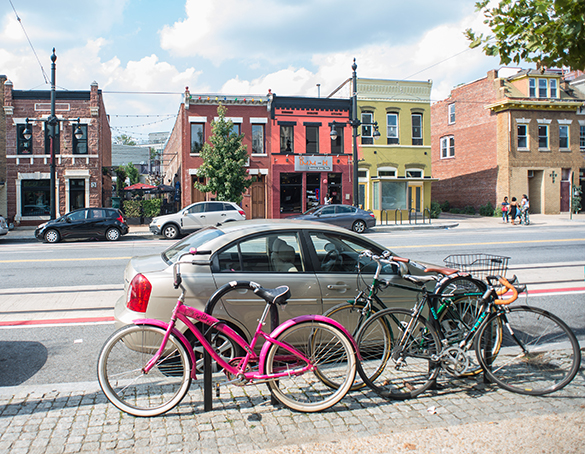
Big Plus
● You can find an affordable home here, especially if you’re interested in a rehab property. Single-family, detached homes are also fairly common, but can be in need of some serious TLC.
● Artsy, energetic, and quirky vibes exist in several Northeast neighborhoods—particularly near the H Street Corridor and the Atlas District. Young singles love the area for the nightlife and chill personality.
● The new D.C. Streetcar adds another way of getting around, in addition to the Metro rail and bus systems, bike shares, and of course Ubers aplenty.
Things to Consider
● Retail, restaurants, and amenities are thin, but improving.
● Neighborhoods nearest the Metro stations are getting the most attention in revitalization efforts, so be sure you’re aware of how far your public transit options are from any home you’re considering. If you’re in some of the outer neighborhoods that border Maryland, you may need a car to get around—primarily due to the lack of retail. There is a lottery for D.C. schools if your neighborhood school doesn’t excite you. However, that means you could be spending a good portion of your day driving your kids to and from school.
By the Numbers
● Population: 690,000
● Household Income: $86,400
● Median Home Value: Home values change rapidly in this market, so ask your real estate agent for a local market analysis.
School Scoop
● Schools in Northeast Washington, D.C. are a part of the District of Columbia Public Schools.
● You have the option of enrolling your children in any school that they aren’t already zoned to in the District of Columbia Public School system through the DCPS one-stop shop lottery system. Lotteries are available for preschool programs (3- and 4-year olds), out-of-boundary schools K-12 (those outside your zone), selective high schools, and charter schools. Spots fill up, so make sure you enroll as soon as the lottery opens in their online system.
● Military families may apply for the DCPS Lottery before you have orders by working with your School Liaison Officer (SLO). If you have a middle or high schooler, it is highly recommended that you consult with your SLO to discuss options for school choice in the D.C. area. That recommendation is emphasized even more if you have a child that is gifted, has an IEP, or has any other specific needs.
● D.C. preschools are publicly funded (FREE) and fill quickly. It is recommended that you enroll early in a preschool, or Child Development Center (CDC), near the base because bus transportation is not available at this age.
● Beginning in 2016-2017, some DCPS schools began operating on an Extended Year calendar that allows for a longer school year with more frequent breaks.
Highlighted Areas
● Logan Circle – Centrally located with hot restaurants, trendy bars, and quirky shopping.
● Woodridge / Brookland – On the edge of the D.C. border with Maryland; larger, newer homes at more affordable prices can be found in these neighborhoods.
● H Street Corridor / Atlas District – Diverse communities with a popular farmers’ market, funky restaurants, and hipster bars; affordable condos and apartments can be found in this transitional neighborhood.
● Petworth / Park View – This area is rapidly becoming an area of interest (particularly nearest the Metro corridor) because of the transit access, affordable residences, and amenities. It’s vibrantly diverse in every aspect: home types, rents, incomes, restaurants, and shopping.
● NoMa – This rapidly developing area takes its name from its location north of Massachusetts Avenue NE. It is best known as a transportation hub and the home of Union Market.
Southeast D.C.

About
Southeast D.C. is the area south of East Capitol Street and east of South Capitol Street (think of the Capitol Building as the center point of a compass). It continues beyond the Anacostia River and includes the area known as “East of the River.” Southeast has a rich African-American history and vibrant culture and has undergone significant revitalization over the past few decades.
After World War II, the Navy Yard scaled back operations, and the commercial heart of the District moved downtown. Abandoned warehouses and divestment in the community—not to mention a once heavily polluted river—left the area ripe for neglect. As with any urban city, you’ll find pockets of crime and areas with bad reputations, but we encourage you to look past that. There are many new high-rise buildings near the water, and the Capitol Hill neighborhood has quaint, tree-lined streets with pricey rowhomes and local shops on every corner.
The construction of Nationals Park in 2008, home to the Washington Nationals professional baseball team, has helped the area tremendously by attracting restaurants, grocers, parks, and public-use amenities to the Southeast Riverfront. Two fantastic parks, the Yards Park and Capitol Park, are right on the river and are constantly abuzz with activity. The Eastern Market is a very popular food and arts market in the Capitol Hill neighborhood, and it lies only a mile north of the Navy Yard.
Neighbors
The areas near the National Mall are tourist-heavy with the abundance of monuments and attractions, but the throngs of visitors thin out dramatically as you travel south. The high-rise apartments and condos will most likely attract young professionals, couples, and possibly families with a small child or fur baby who won’t need a ton of space. You’ll find hipsters, thespians, working class people, and retirees in Southwest.
Neighborhood Feel
Close to the Riverfront, you’ll see high-rise apartment buildings with new restaurants, parks, and community spaces to enjoy. As you go farther north into Capitol Hill, the homes get pricier, and the neighborhoods become more affluent. Young families gravitate near the Eastern Market for walkable restaurants, parks, and shopping; and they love the quieter pace and lack of raucous nightlife.
Area Info | Southeast D.C.
Points of Interest
● Nationals Park – Washington Nationals MLB home stadium
● Audi Field – D.C. United professional soccer team’s stadium
● D.C. Armory – Event and convention center housed in a WWII armory
● Library of Congress –The world’s biggest library
● Eastern Market – Expansive market with trendy foods, artisanal everything, flowers, produce…you name it!
● Capitol Riverfront – Home of the Yards Park and Canal Park
● Anacostia Riverwalk Trail
● Anacostia Community Museum and Frederick Douglass House
Big Plus
● Southeast is home to a gorgeous riverfront, abundant public spaces, and parks with a young vibe and an active culture.
● Transit options are many with the Navy Yard Metro Station, bus service, and the Circulator bus to connect to Union Station and Capitol Hill. There’s even a water taxi!
Things to Consider
● Buying or renting a home sight unseen is not recommended, you’ll want to get a feel for the neighborhood before you move here.
● There is a lottery for D.C. schools if your neighborhood school doesn’t excite you. However, that means you could be spending
a good portion of your day driving your kids to and from school.
By the Numbers
● Population: 690,000
● Household Income: $86,400
● Median Home Value: Home values change rapidly in this market, so ask your real estate agent for a local market analysis.
School Scoop
● Schools in Southeast Washington, D.C. are a part of the District of Columbia Public Schools.
● You have the option of enrolling your children in any school that they aren’t already zoned to in the District of Columbia Public School system through the DCPS one-stop shop lottery system. Lotteries are available for preschool programs (3- and 4-year olds), out-of-boundary schools K-12 (those outside your zone), selective high schools, and charter schools. Spots fill up, so make sure you enroll as soon as the lottery opens in their online system.
● Military families may apply for the DCPS Lottery before you have orders by working with your School Liaison Officer (SLO). If you have a middle or high schooler, it is highly recommended that you consult with your SLO to discuss options for school choice in the D.C. area. That recommendation is emphasized even more if you have a child that is gifted, has an IEP or has any other specific needs.
● D.C. preschools are publicly funded (FREE) and fill quickly. It is recommended that you enroll early in a preschool, or Child Development Center (CDC), near the base because bus transportation is not available at this age.
● Beginning in 2016-2017, some DCPS schools began operating on an Extended Year calendar that allows for a longer school year with more frequent breaks.
Highlighted Areas
● Capitol Riverfront
● Capitol Hill
● Hillcrest
● Near Southeast
● Historic Anacostia
Southern Nova
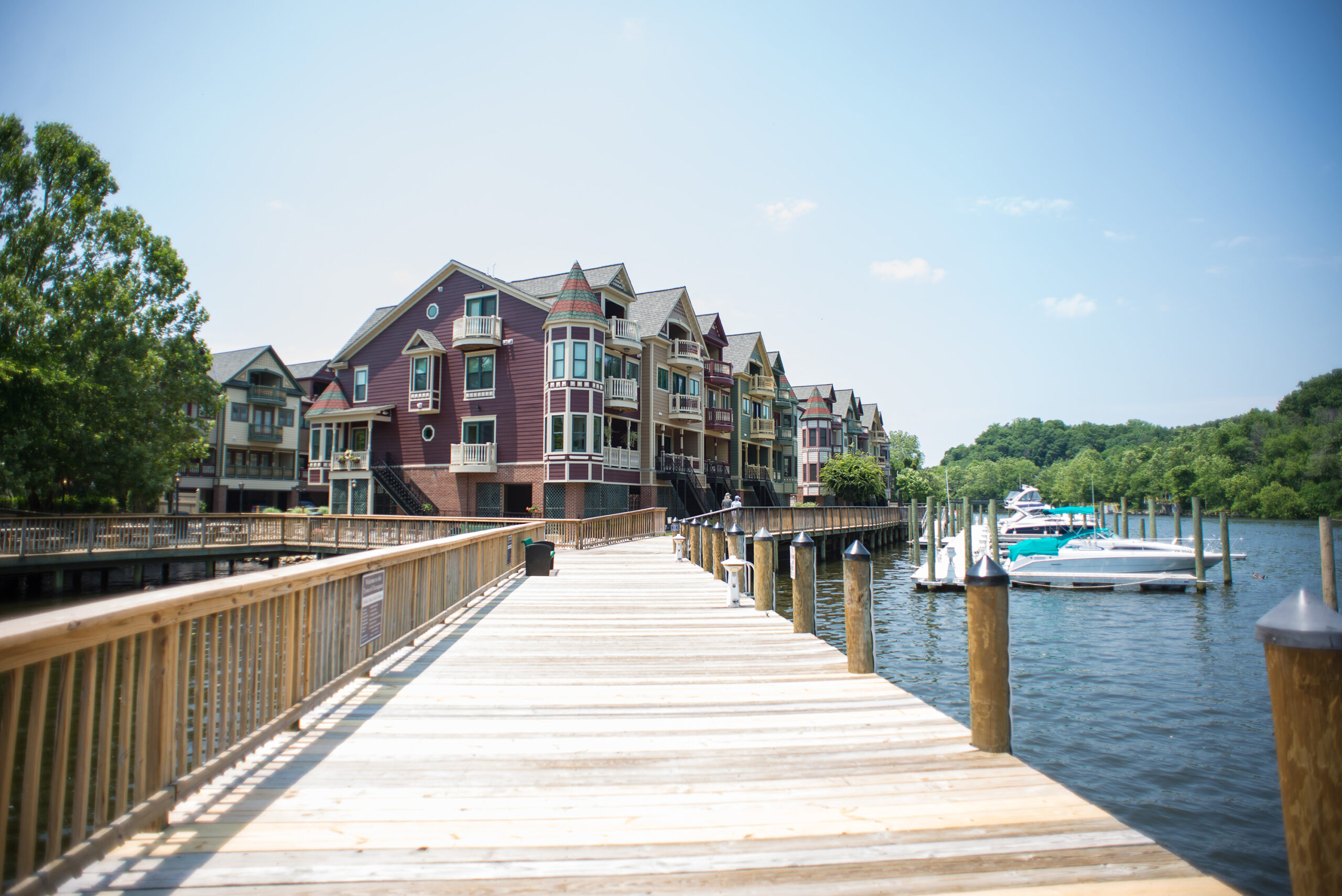
About
Prince William County and Stafford County are located in the southern reaches of the Northern Virginia (NOVA) suburban area. Similarities with Fairfax County are numerous, and some statistics even surpass those of Fairfax County. The cost of living in Southern NOVA is lower and the neighborhoods are more rural. Unless you’re commuting to Marine Corps Base Quantico or Fort Belvoir, the drive north is long and arduous.
A lot of military families choose to live in southern NOVA for its natural beauty and the community’s emphasis on outdoor activities. The numerous acres of parkland, nature refuges, lakes, forests, trails, and golf courses lure residents outside. Potomac Mills
is known for its shopping, and the area’s Civil War battlefields are always fun to explore.
Neighbors
Southern NOVA residents are an active group and take advantage of the opportunities for outdoor recreation. Hiking, fishing, boating, camping, horseback riding, and golfing are all popular ways to blow off the city-induced stress. There are many military families who migrate to this area for the space and quieter lifestyle. Like most of Northern Virginia, you’ll also find residents who work in a variety of sectors.
Neighborhood Feel
There are many types of communities in southern NOVA, ranging from rural to urban. Some of the more densely populated cities lie on the I-95 corridor and tend to thin out as you travel away from this D.C. commuter artery.
Woodbridge
Woodbridge boasts large, affordable homes and one of the region’s most well-known shopping centers—the Potomac Mills Mall. There is also an Ikea in Woodbridge that draws shoppers from all over Northern Virginia. A lot of people like being in Woodbridge because of the size and affordability of the homes. And while it is a very tough commute to bases to the north, the reverse commute to Marine Corps Base Quantico is ideal. The Schools in Woodbridge belong to Prince William County Public Schools.
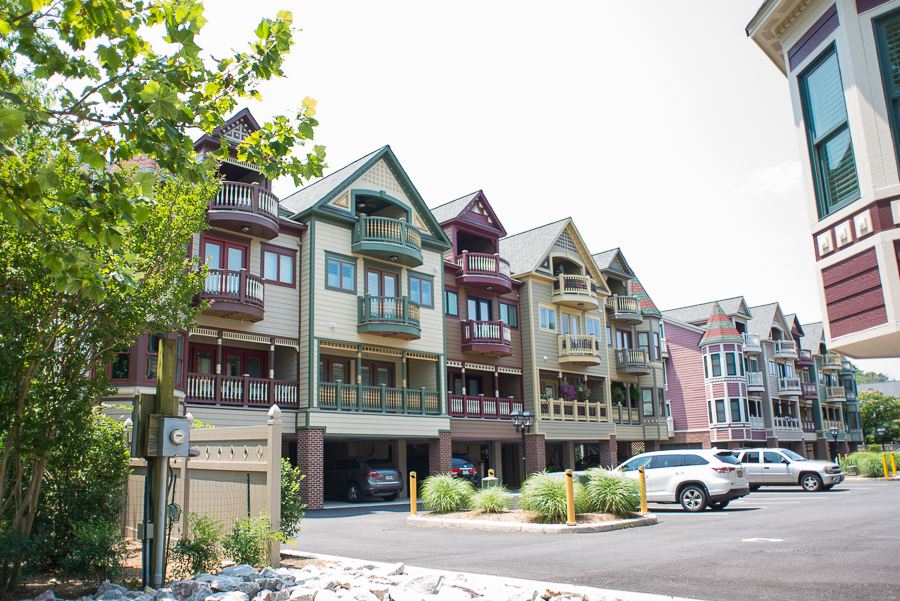

Home Size in Woodbridge
If you have your heart set on a large new build in master-planned communities, then you’ll love Woodbridge. The home prices are less inflated than in some areas closer to D.C., and you still have all the amenities that you would expect to find in a large city.
Home Pricing in Woodbridge
Home values change rapidly in this market, so ask your real estate agent for a local market analysis.
By the Numbers
● Population: 44,700
● Household Income: $113,100
Commuting from Woodbridge
A lot of the families we’ve spoken to have all agreed on one thing—they were lured to the area by attractive, affordable homes, but they grossly underestimated the commute times. The only base that Woodbridge is 20 minutes away from is Marine Corps Base Quantico, and that is mainly because you’re reverse commuting. If someone tells you anything else, politely ignore them. Even the
commute home from Fort Belvoir, which is roughly 10 miles away, could potentially take you a solid hour! The VRE feeds into the Metro and is a great option for those not looking to drive, but will still take significant time from your day.
Stafford
Stafford is a rapidly growing rural-suburban area just south of Marine Corps Base Quantico. Affordable homes, lower taxes, and lower cost of living are attracting people to this quiet community. This area offers land and seclusion, but at the cost of a horrendous commute to everywhere except MCB Quantico.
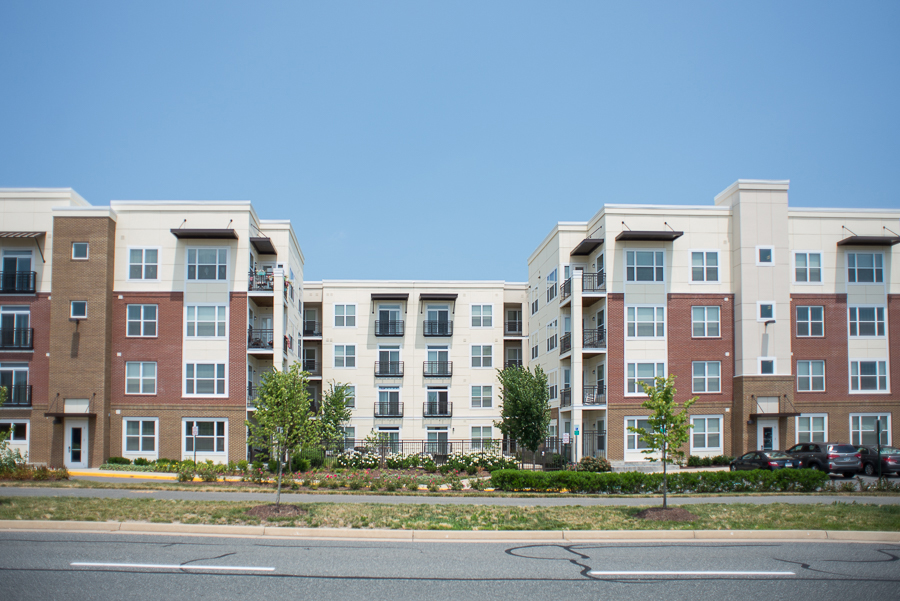
Home Size in Stafford
You can find just about anything you’re looking for in Stafford, from small ranchers to 5,000 square foot mansions. The bonus here is the added space and opportunity for acreage and seclusion. The growing focus on the area is also bringing tons of new developments.
Home Pricing in Stafford
Home values change rapidly in this market, so ask your real estate agent for a local market analysis.
By the Numbers
● Population: 5,400
● Household Income: $78,600
Commuting from Stafford
Getting to MCB Quantico from Stafford is a 20 minute drive up I-95. The VRE also extends to Stafford, providing a viable, but lengthy, option for commuting to D.C. and the Metro. The next closest installation to Stafford is Fort Belvoir, but traveling north 30 miles can easily take up to two hours.
Area Info | Southern Nova
Points of Interest
● National Museum of the Marine Corps
● Manassas National Battlefield Park
● Manassas Train Station
● Leesylvania State Park, Prince William Forest Park
● Splash Down Waterpark
● Burnside Farms
● BadWolf Brewing Company, Heritage Brewing Company, The Winery at La Grange
● Occoquan Bay National Wildlife Refuge
● Ben Lomond Manor House & Old Rose Garden
Big Plus
● If you plan to live this far away from D.C., commuting in via I-95 (southern suburbs) is considered preferable to driving in via I-66 (western suburbs). Stafford and Woodbridge have similar perks as Chantilly or Centreville, but I-95 is better equipped to handle the commuter traffic with more HOV, Express Lanes, and available options for slugging and carpools.
● Outdoor fanatics or those looking to live “out in the county” will find refuge here. The availability of homes with acreage increases the farther south you go, especially in Stafford.
● Southern NOVA boasts lower taxes and cost of living than areas closer to D.C.
● If you frequently travel south down the Eastern Seaboard, living this far south will give you a huge head start on traffic.
Things to Consider
● If you want to be close enough to the District to take advantage of all that the city has to offer, you’re going to really want to consider the commute. Venturing into the city will be an all-day excursion no matter how you plan to get there, and you’ll have a very strict “leave by 2-3PM” deadline on any activity. Unless of course, you enjoy sitting on I-95 for hours.
● Although the schools are still held to the high standards of the Commonwealth of Virginia, some parents have expressed a preference for Fairfax County Public Schools over Prince William County Public Schools or Stafford County Public Schools. We suggest researching your district and school choices to see if there would be a significant impact for your student.
● We’ll go ahead and mention traffic one more time to drive the point home. The proximity of some neighborhoods to I-95 affects local traffic as well. The shopping epicenters are typically congested 24/7 and you will battle that daily, even if you aren’t commuting for work. Public transit options are limited to the VRE, so driving is the most common mode of transportation.
School Scoop
● Prince William County contains over 100 schools. One of the best schools is Marshall Elementary School. Public schools in Woodbridge are part of Prince William County Public Schools.
● Stafford County contains over 30 schools. One of the highest rated schools is Rodney E. Thompson Middle School. Public schools in Stafford belong to Stafford County Public Schools.
● Virginia does not follow Common Core standards, so you will want to be acquainted with the Virginia Department of Education Standards of Learning (SOLs) to be sure that your student is prepared, especially when transferring from a Common Core state.
Highlighted Areas
● Woodbridge
• Lake Ridge
• May’s Quarter
• Newport Estates
● Stafford
• Aquia Harbor
• Aquia Overlook
• Embrey Hill
• Austin Ridge
• Liberty Knolls at Colonial Forge
Looking at relocating?
Enter your information below and we will reach out to help the process.
7 Reasons You Should Consider Buying a Home
1. TAX ADVANTAGES
To encourage homeownership, the IRS has provided many tax breaks for owning a home. Credits may be available for specific home improvements, such as using clean energy or for qualified first-time home buyers. The way most homeowners see those advantages is through income tax itemization and deductions like mortgage interest and real estate taxes.
2. STABALIZE MONTHLY HOME COSTS
Owning your own house is one of the safest bets on stabilizing your monthly home costs. There’s no worry of rent getting increased significantly after each year of living in someone else’s home. Additionally, when you answer to yourself, there is no worry of landlord changes or unexpected lease termination.
3. HOUSE HACKING
Generally speaking, house hacking is a smart strategy that involves renting out a portion of your primary residence as a means of generating income to offset your own living expenses. Think turning your finished basement or mother-in-law quarters into an AirBnB! Or consider purchasing a multi-unit duplex or triplex: live on one side and rent out the other! If your home making money while you’re living in it doesn’t sound like your thing, there’s always renting it out after you PCS as an income generating investment property.
4. Increased Privacy
Generally speaking, house hacking is a smart strategy that involves renting out a portion of your primary residence as a means of generating income to offset your own living expenses. Think turning your finished basement or mother-in-law quarters into an AirBnB! Or consider purchasing a multi-unit duplex or triplex: live on one side and rent out the other! If your home making money while you’re living in it doesn’t sound like your thing, there’s always renting it out after you PCS as an income generating investment property.
5. Pets Are Welcome!
For those who choose to rent instead of buying, it can be extremely difficult to find rentals who allow for your
four-legged, furry friends. Landlords often require hefty pet deposits or place heavy restrictions on the number of pets and breeds they allow—if they will even allow pets. When considering quality of life, including beloved pets and the indoor and outdoor space available to them matters. Having the flexibility to include ALL members of your family as a homeowner is priceless!
6. Pride of Ownership
One of the greatest benefits of owning your own home is the pride of ownership that comes along with it. Not only are homeowners more inclined to take good care of their investment with routine maintenance and cleaning, but also they are free to make design choices ranging from hanging artwork on the walls, to paint colors, to customization of closets, electronics, and more. As military families who relocate frequently, having your home reflect who you really are feels important.
7. Safe and Stable Long Term Investment + Forced Savings
Owning a home has historically been one of the safest, lowest risk financial investments that tends to have long-term stability and success. As your home value appreciates and your mortgage balance decreases, what’s left is growing equity with an eventual paid off home. Making a monthly house payment is akin to setting aside a specific amount each month into a savings account—it’s a little difficult to access in the moment, but over time it can build into something significant in the form of equity.

FIVE RESOURCES TO HELP YOU IN YOUR RELOCATION PROCESS

Your PCS is underway!
The home buying and moving transition process has begun. Now what? If it feels like there are a million things to do, don’t fret because you don’t have to do them all yourself. During the relocation process, there are many service providers that can assist you in making your move a smooth one.
Consider these five resources to help you in the process
1. MOVING COMPANIES
Sure, the military offers transportation and relocation services, but many service members decide to coordinate the transfer of household goods themselves. Not only can you often earn money on the difference between moving costs and weight allowances, but you can be assured that you have more control over your belongings. Services that moving companies offer can range from delivery of boxes and pods for the “you-pack” model all the way to full-service logistics companies that will do all of the packing, loading, driving, and unpacking for you.
2. STORAGE
Whether you need to store your household goods for a few weeks until you close on your home or you decide that you have more stuff than square footage, storage companies abound. Sizes, conditions, and contracts vary widely so be sure to do your homework before you commit. Particularly in climates with extreme cold, heat, or humidity, it is important to consider using only climate-controlled storage to ensure the protection of your furniture and temporarily unused items.
3. TEMPORARY HOUSING
It is not uncommon for there to be a short gap of time during a military move between when you arrive at your new duty station and your new home being available to inhabit. No longer are hotels the only option for sticking out a few days or weeks during the wait. Vacation Rentals by Owner (VRBO) and Airbnb are great options to make you feel more at home while you wait for your home. In fact, why not take advantage of seeing your new city through the eyes of a tourist? Find a location near new local attractions and dining and enjoy a few days of getting to know the lay of the land.
4. USPS/IRS
Once you get settled in at your new home, it’s important that you alert agencies that will make sure your current and up-to-date address is on file. The United States Postal Service (USPS) and the Internal Revenue Service (IRS) are two of the most important and by doing so, any important mail or documents in your name should be forwarded or sent along to your new address. It’s also a good idea to notify banks, credit card companies, and other debt collectors of a change of address. These days nearly all of these transactions can be handled online.
5. DISCARD & DONATE SERVICES
No matter how much you purge, toss, organize, minimize, or donate before you pack up the moving truck, it never fails that after you get unpacked on the other side there seems to be more stuff to declutter. Discard and donate services can help with this. Many are a phone call away and will happily come to your residence for a pickup. Others are structured where you simply drop off at a store. A lot of these services are charitable organizations and will offer you documentation for your own taxes based on your donation. It’s a win-win: you downsize by donating, and someone else benefits from your use of your items.

